RAK4260 Evaluation Board Quick Start Guide
Prerequisites
The following two sections provide a list of the components and tools you need in order to get started with the development board. Some of the components are included in the package, others you need to provide yourself.
What Do You Need?
Before going through each and every step in the installation guide of the RAK4260 Evaluation Board, make sure to prepare the necessary items listed below:
- RAK4260 Evaluation Board
- Gateway in range for testing (not provided)
- Micro USB Cable
- Windows PC
- RAKDAP1 DapLink Tool (not provided)
What's Included in the Package?
- 1-pc RAK4260 EVB (RAK4261 + RAK5005)
- 1-pc Micro USB Cable
- 1-pc LoRa Antenna (iPEX)
- 2-pcs 4-pin Header
- 9-pcs Dupont Lines
Product Configuration
Interfacing with the RAK4260 Evaluation Board
To check if you have successfully flashed the custom firmware provided by RAKwireless correctly, download the RAK Serial Port Tool.
Before powering the RAK4260 Evaluation Board, you should install the LoRa antenna first. Not doing so might damage the board.
- Connect your RAK4260 Evaluation Board to your Windows PC using the provided micro USB cable.
 Figure 1: RAK4260 Evaluation Board to Laptop Connection
Figure 1: RAK4260 Evaluation Board to Laptop Connection- Open the RAK Serial Port Tool.
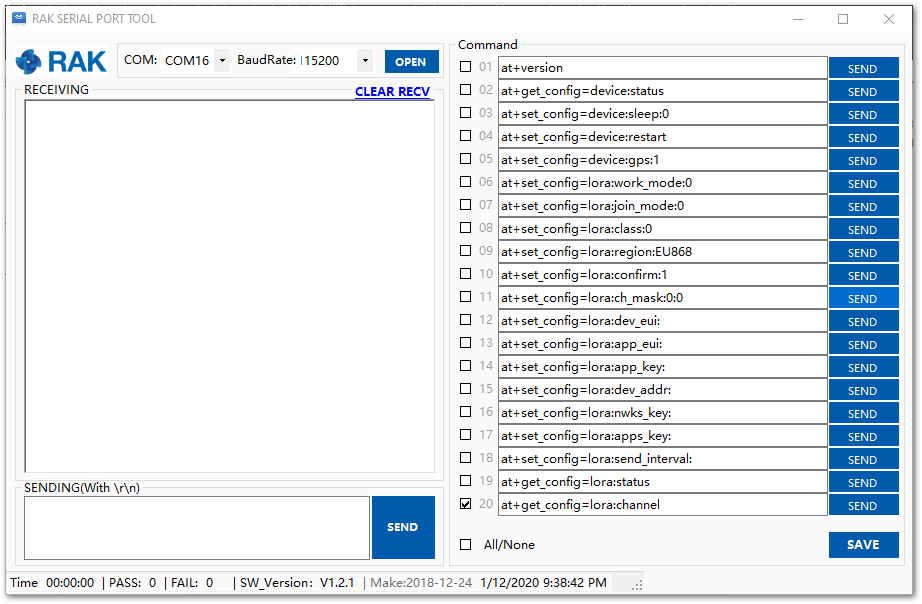 Figure 1: RAK Serial Port Tool
Figure 1: RAK Serial Port Tool- To find the correct COM Port number for your device, go to Device Manager by pressing Windows + R, and then type
devmgmt.msc. Or, search for Device Manager in the Start Menu.
 Figure 1: Device Manager
Figure 1: Device Manager- Look for Ports (COM & LPT) and find the name USB-SERIAL CH340. Take note of the COM Port Number.
If you didn't find any port with the name USB-Serial CH340, make sure you have installed the CH340 Drivers on your Windows PC.
- Choose the Correct Port Number and Baud rate from the Device Manager, then click on the “OPEN” button.
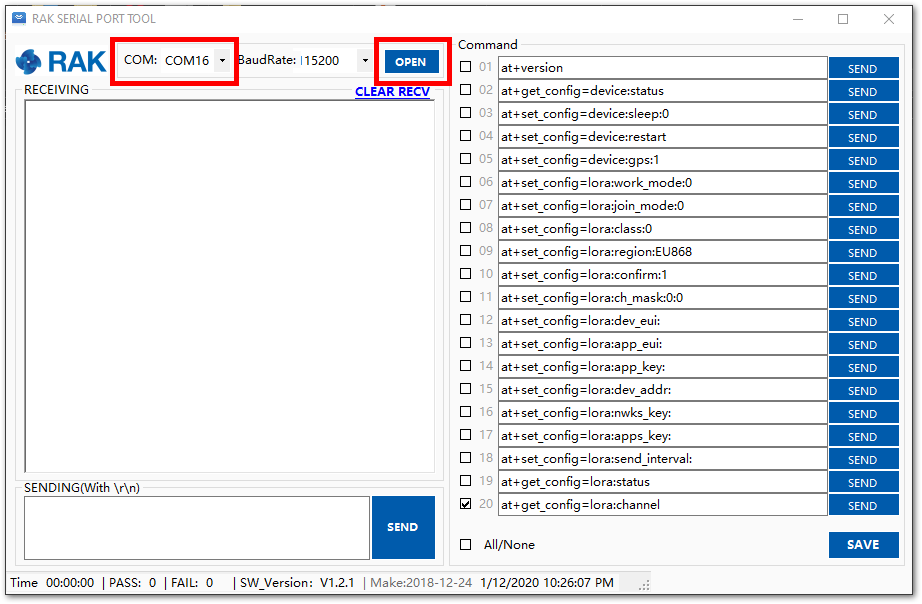 Figure 1: Correct Port Number and Baud rate
Figure 1: Correct Port Number and Baud rateConnecting to The Things Network (TTN)
In this section, you will be connecting the RAK4260 Evaluation Board to The Things Network (TTN). If you don't have an account yet, head on to The Things Network website and create one. Once done, log in to your account and go to the console.
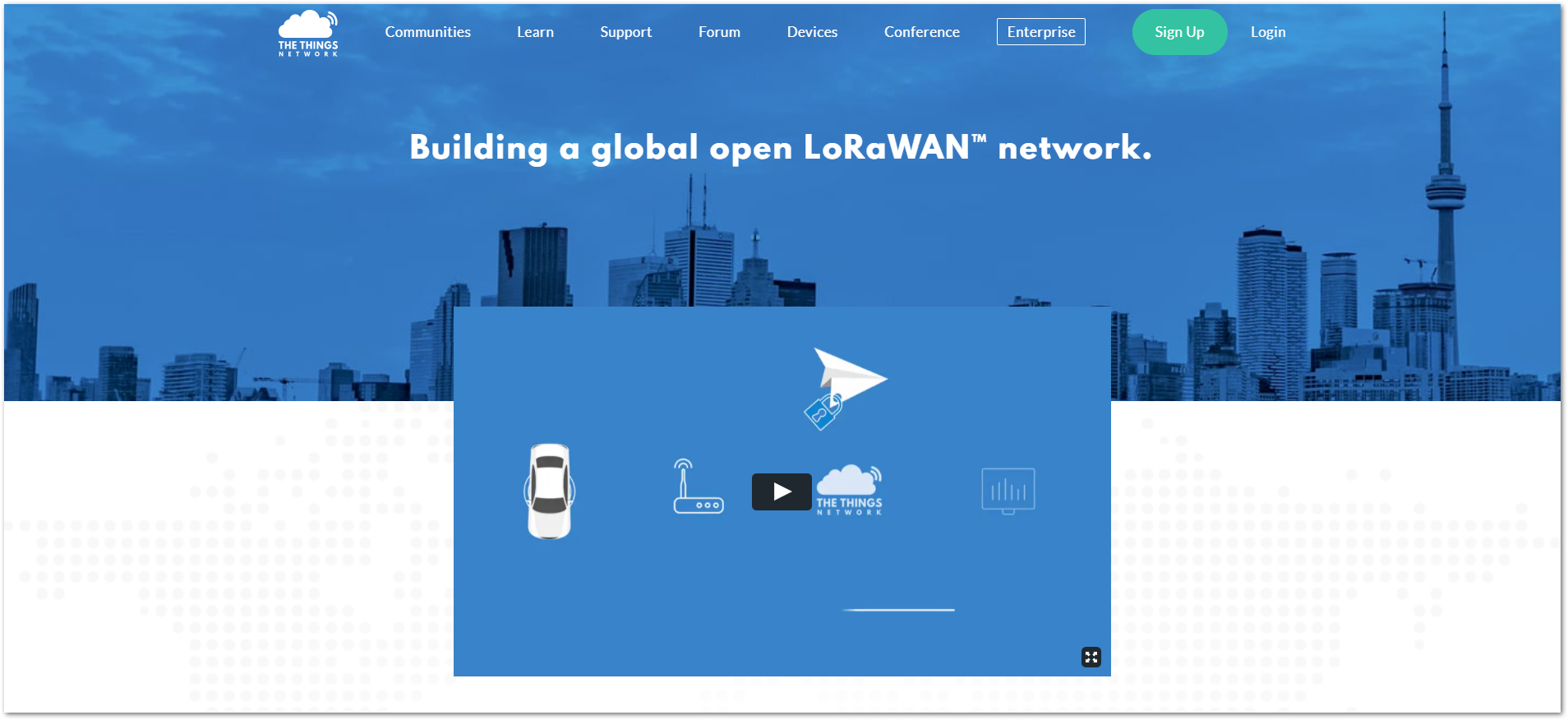 Figure 1: The Things Network Home Page
Figure 1: The Things Network Home Page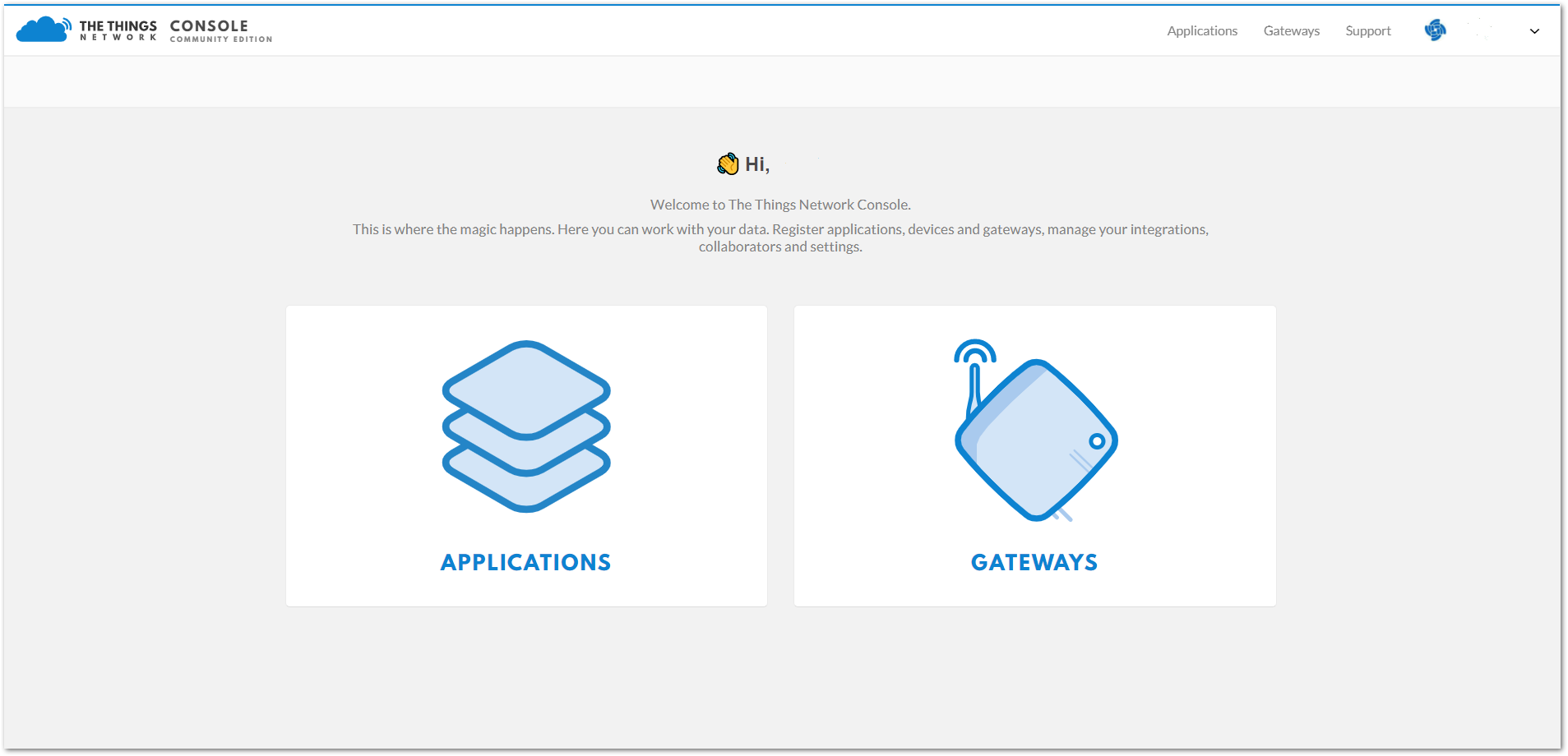 Figure 1: TTN Console Page
Figure 1: TTN Console Page- Choose “APPLICATIONS”
Adding an Application
- Click on the “add application” button.
 Figure 1: Application Page
Figure 1: Application Page Figure 1: Add Application Parameters
Figure 1: Add Application ParametersHere are the things that you should take note of in adding an application:
- Application ID - a unique id of your application in the Network. Note that the characters should be in lower case, and no spaces are allowed.
- Description - a short and concise human-readable description of your application.
- Application EUI - this will be generated automatically by The Things Network for convenience.
- Handler Registration - handler you want to register this application to.
- After you fill in the necessary information, press the “Add application” button at the bottom of the page. If you see the same page, as shown in Figure 9, this means that you have successfully registered your application.
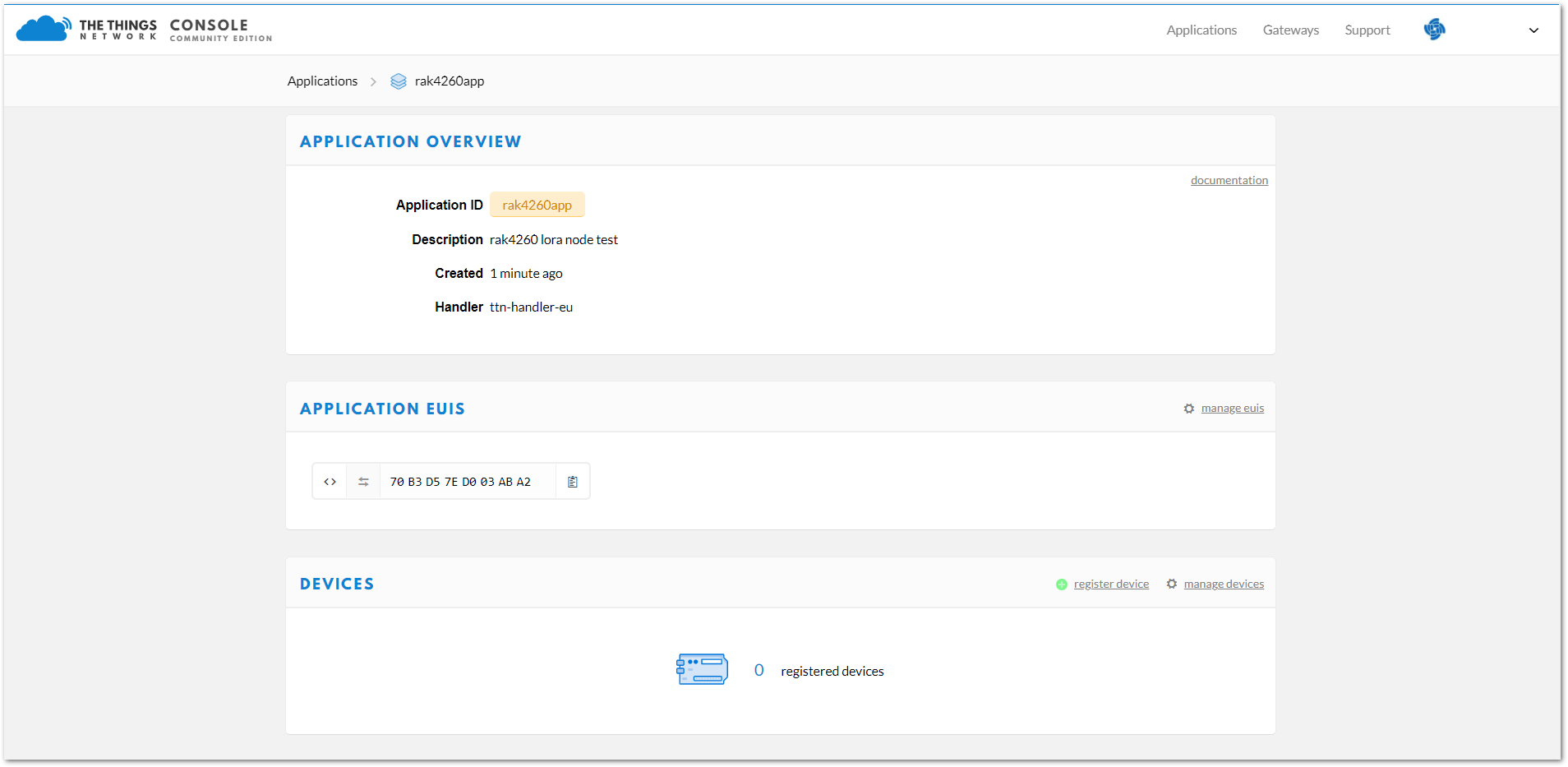 Figure 1: Application Overview
Figure 1: Application OverviewRegister Device
- Click “register device”.
 Figure 1: Device Section
Figure 1: Device SectionHere are the things that you should take note of in registering your device:
- Device ID - a unique identifier for your RAK4260 Evaluation Board in your application. You need to enter this manually.
- Device EUI - a unique identifier for your device in the network. You can change it later if you want.
- Click on the highlighted in red icon and the Device EUI will be automatically generated. The App Key should be in auto-generation mode by default.
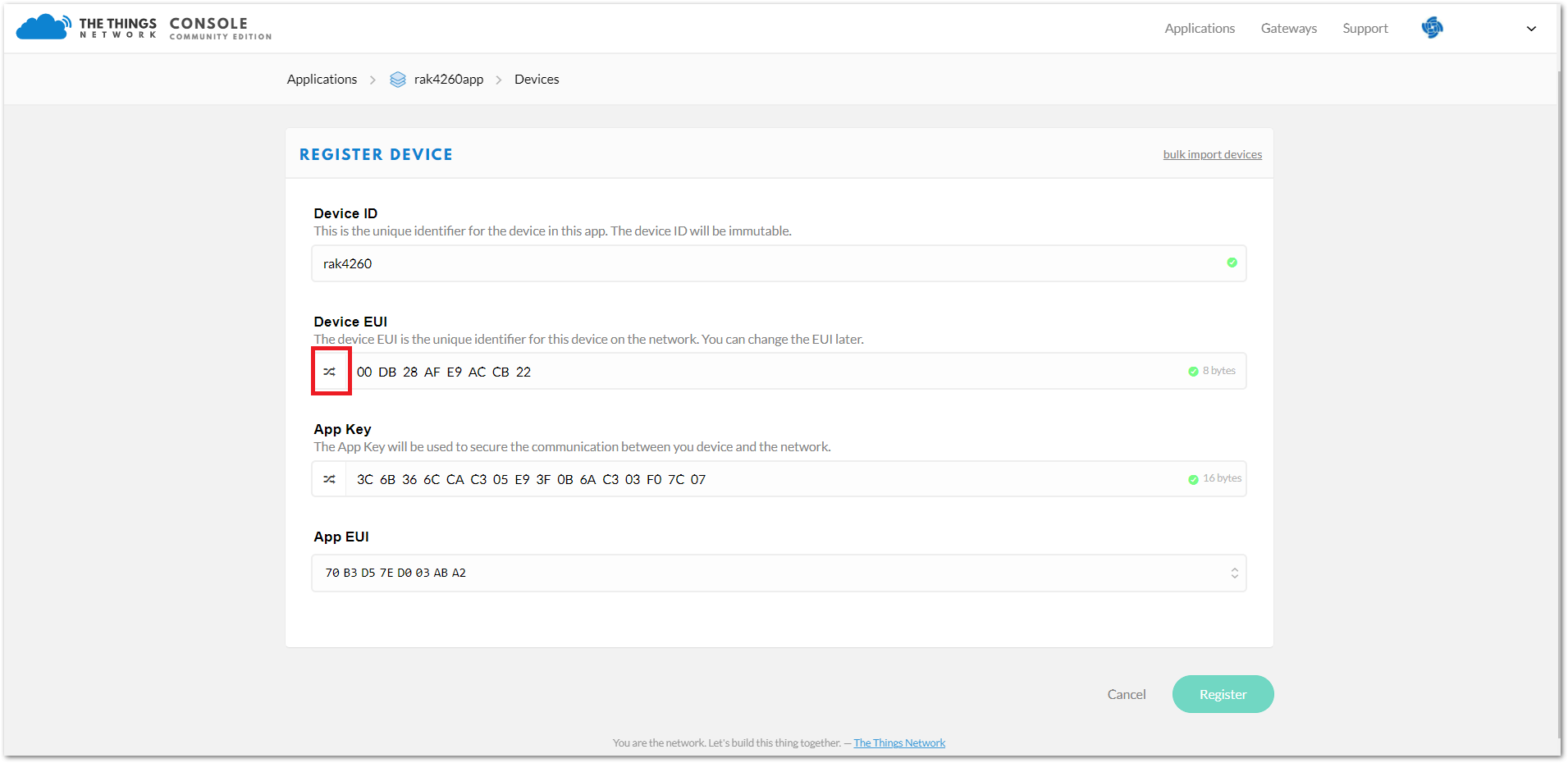 Figure 1: Add your Device
Figure 1: Add your Device- Lastly, click on the “Register” button. Now, your device is registered under the corresponding application.
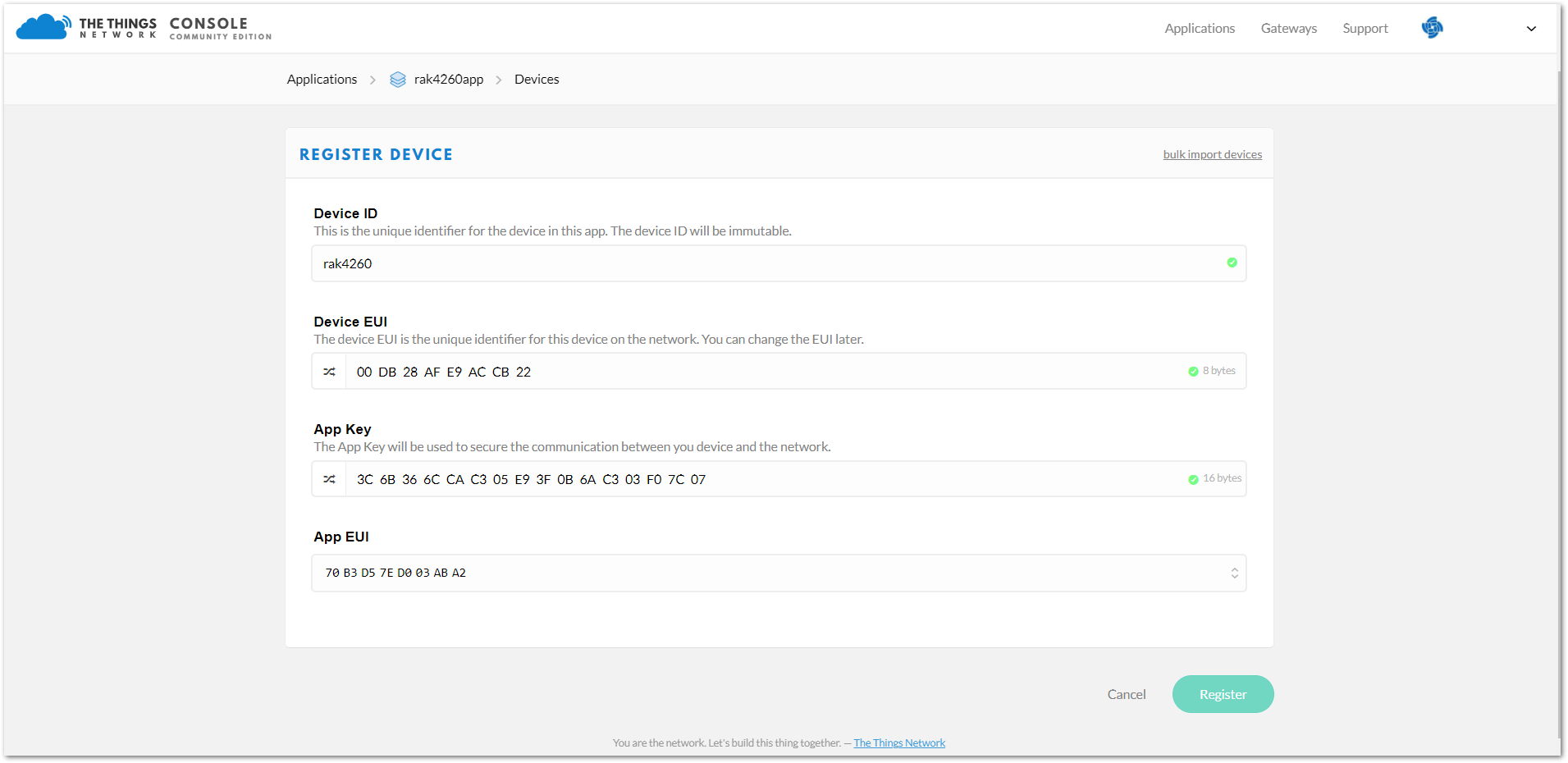 Figure 1: Register Device
Figure 1: Register DeviceTTN Device Overview
You can check all the parameters of the newly registered device created by clicking the “Overview”. The default join mode is OTAA.
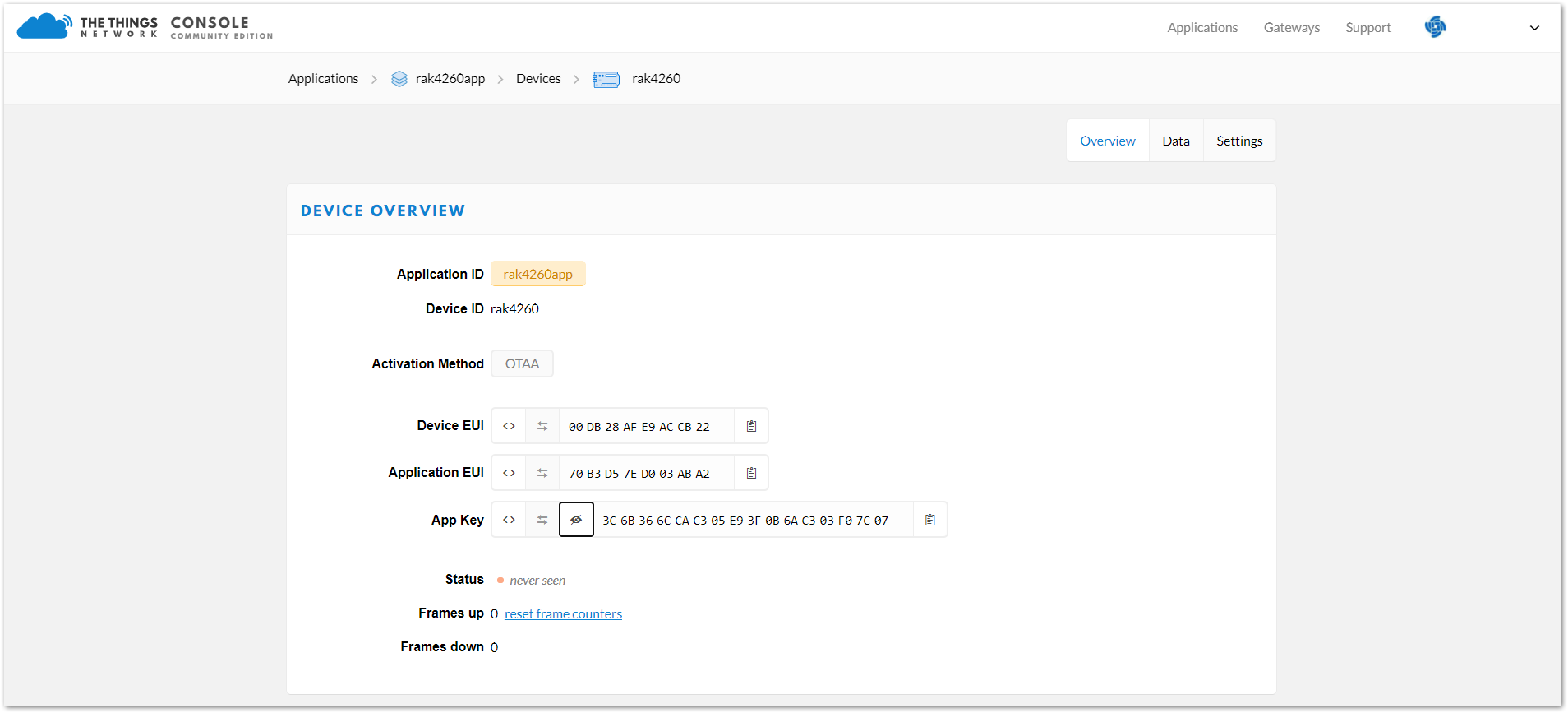 Figure 1: Device Overview
Figure 1: Device OverviewTesting RAK4260 LoRa Node demo
To test your project, you need to perform the steps below:
-
Install the RAK4260 Development Platform.
-
Check the join parameters, as shown in the TTN Device Overview. Modify and save the "conf_app.h" file.
Click to view the code
/*Define the Sub band of Channels to be enabled by default for the application*/
#define SUBBAND 1
#if ((SUBBAND < 1 ) || (SUBBAND > 8 ) )
#error " Invalid Value of Subband"
#endif
/* Activation method constants */
#define OVER_THE_AIR_ACTIVATION LORAWAN_OTAA
#define ACTIVATION_BY_PERSONALIZATION LORAWAN_ABP
/* Message Type constants */
#define UNCONFIRMED LORAWAN_UNCNF
#define CONFIRMED LORAWAN_CNF
/* Enable one of the activation methods */
#define DEMO_APP_ACTIVATION_TYPE OVER_THE_AIR_ACTIVATION
//#define DEMO_APP_ACTIVATION_TYPE ACTIVATION_BY_PERSONALIZATION
/* Select the Type of Transmission - Confirmed(CNF) / Unconfirmed(UNCNF) */
#define DEMO_APP_TRANSMISSION_TYPE UNCONFIRMED
//#define DEMO_APP_TRANSMISSION_TYPE CONFIRMED
/* FPORT Value (1-255) */
#define DEMO_APP_FPORT 1
/* Device Class - Class of the device (CLASS_A/CLASS_C) */
#define DEMO_APP_ENDDEVICE_CLASS CLASS_A
//#define DEMO_APP_ENDDEVICE_CLASS CLASS_C
/* ABP Join Parameters */
#define DEMO_DEVICE_ADDRESS 0x02603119
#define DEMO_APPLICATION_SESSION_KEY {0x00, 0x60, 0x10, 0x06, 0x30, 0x07, 0x04, 0x00, 0x69, 0x00, 0x60, 0xc0, 0x06, 0x90, 0x07, 0x04}
#define DEMO_NETWORK_SESSION_KEY {0x00, 0x40, 0x10, 0x06, 0x30, 0x07, 0x04, 0x00, 0x69, 0x00, 0x60, 0xc0, 0x06, 0x90, 0x07, 0x04}
/* OTAA Join Parameters */
#define DEMO_DEVICE_EUI { 0x00, 0xDB, 0x28, 0xAF, 0xE9, 0xAC, 0xCB, 0x22 }
#define DEMO_APPLICATION_EUI { 0x70, 0xB3, 0xD5, 0x7E, 0xD0, 0x03, 0x5D, 0x63 }
#define DEMO_APPLICATION_KEY { 0x3C, 0x6B, 0x36, 0x6C, 0xCA, 0xC3, 0x05, 0xE9, 0x3F, 0x0B, 0x6A, 0xC3, 0x03, 0xF0, 0x7C, 0x07 }
/* Multicast Parameters */
#define DEMO_APP_MCAST_ENABLE false
#define DEMO_APP_MCAST_GROUP_ADDRESS 0x0037CC56
#define DEMO_APP_MCAST_APP_SESSION_KEY {0x2B, 0x7E, 0x15, 0x16, 0x28, 0xAE, 0xD2, 0xA6, 0x2B, 0x7E, 0x15, 0x16, 0x28, 0xAE, 0xD2, 0xA6}
#define DEMO_APP_MCAST_NWK_SESSION_KEY {0x3C, 0x8F, 0x26, 0x27, 0x39, 0xBF, 0xE3, 0xB7, 0xBC, 0x08, 0x26, 0x99, 0x1A, 0xD0, 0x50, 0x4D}
/* This macro defines the application's default sleep duration in milliseconds */
#define DEMO_CONF_DEFAULT_APP_SLEEP_TIME_MS 5000
You must choose one LoRaWAN activation method and modify the join parameter's definition. The join parameters and activation methods are defined in the conf_app.h file.
-
Build the RAK4260 LoRa demo.
-
Flash the firmware.
The default join mode is OTAA, and the default frequency is EU868. After resetting it, RAK4260 will join automatically if the dev_eui, app_eui, and app_key parameters have been configured correctly in the source code.
-
Connect the RAK4260 Evaluation board and configure RAK Serial Port Tool.
-
Press the “reset button” on your RAK5005 Baseboard Module. If everything works perfectly, you should see the same message shown in Figure 14.
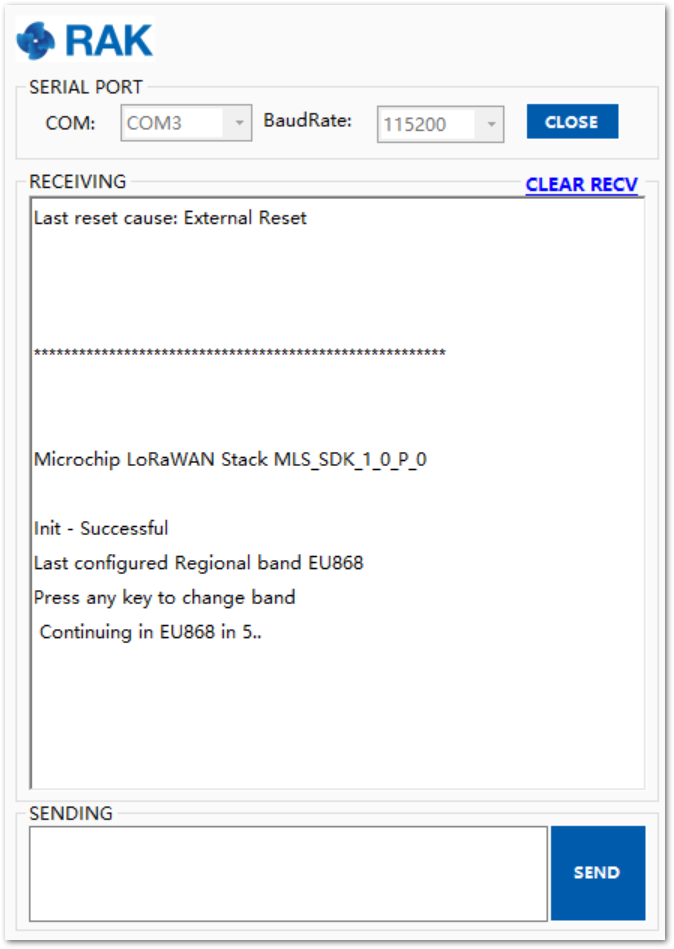 Figure 1: Serial Port Tool Successful Connection
Figure 1: Serial Port Tool Successful Connection- Choose Option 1 “Send Join Request” then click on the “SEND” button.
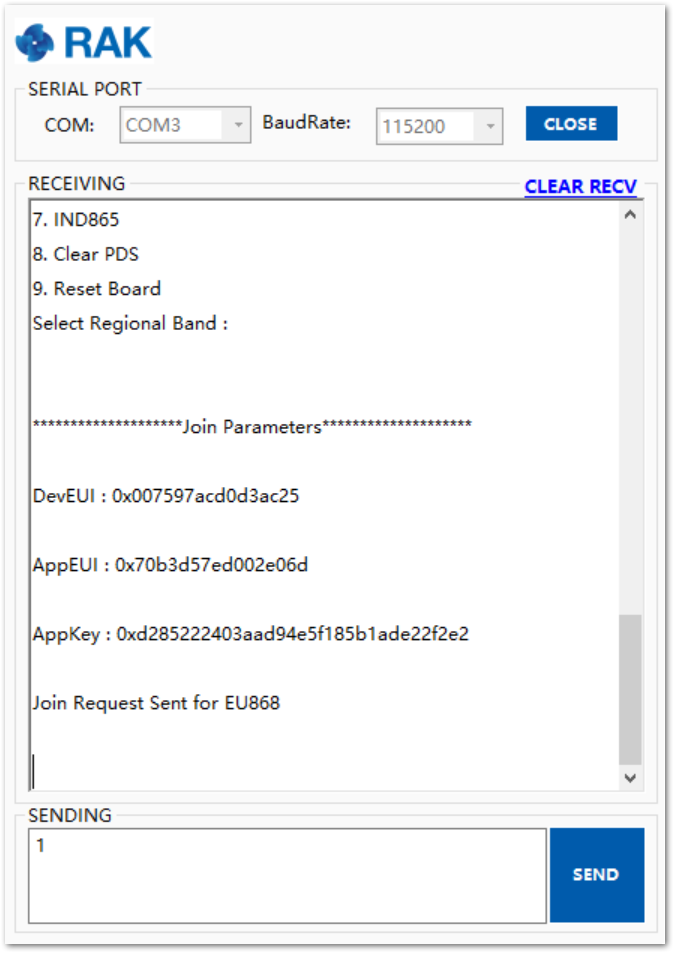 Figure 1: Join parameters sent
Figure 1: Join parameters sent- To send data from the RAK4260 to the TTN successfully, choose Option 2 then click on the “SEND” button.
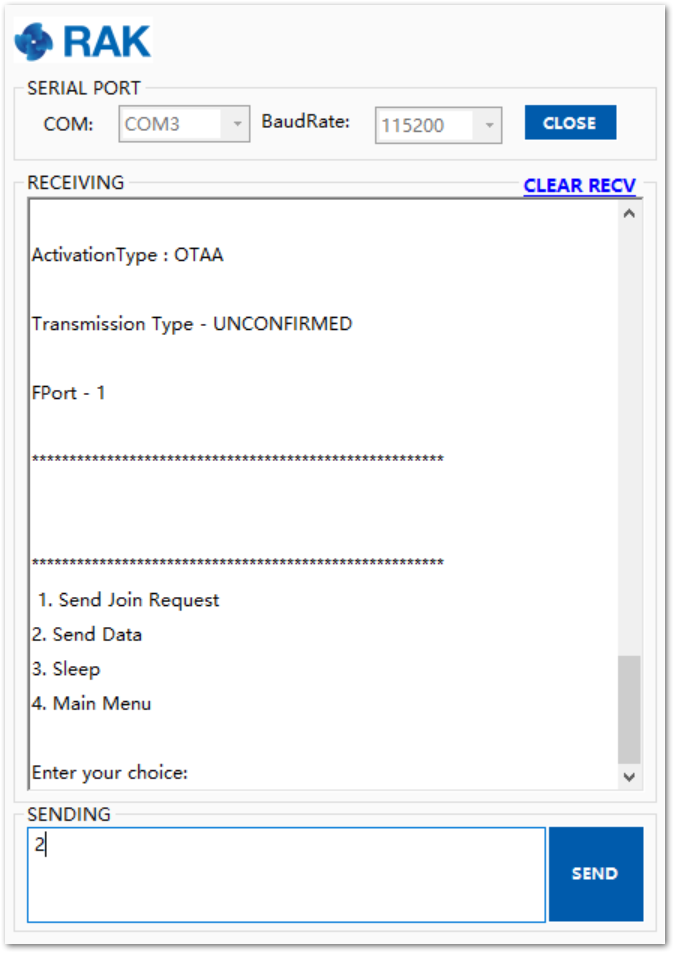 Figure 1: LoRaWAN data send
Figure 1: LoRaWAN data send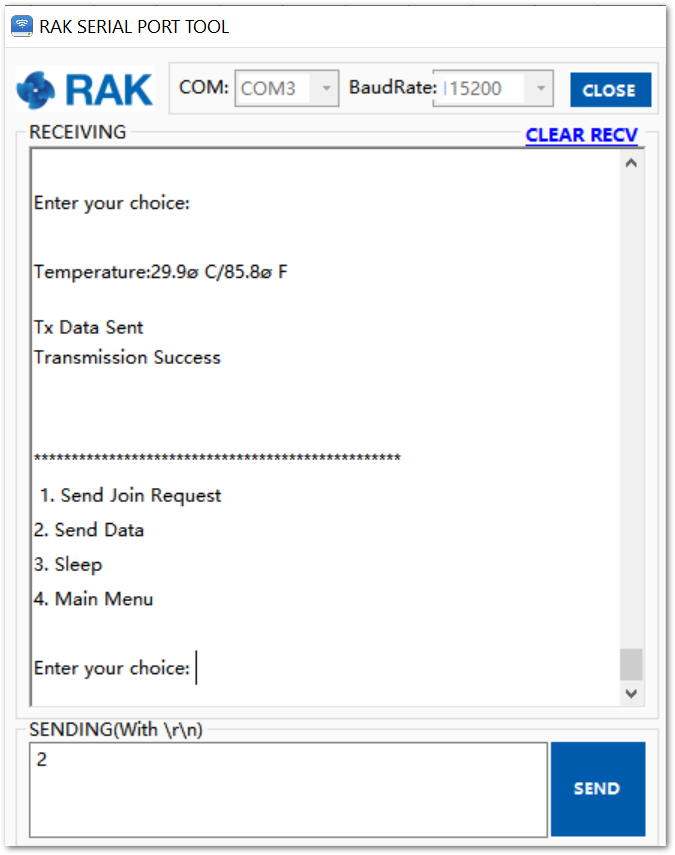 Figure 1: LoRaWAN Transmission Success
Figure 1: LoRaWAN Transmission Success- Data is now received by the TTN, as shown in Figure 18.
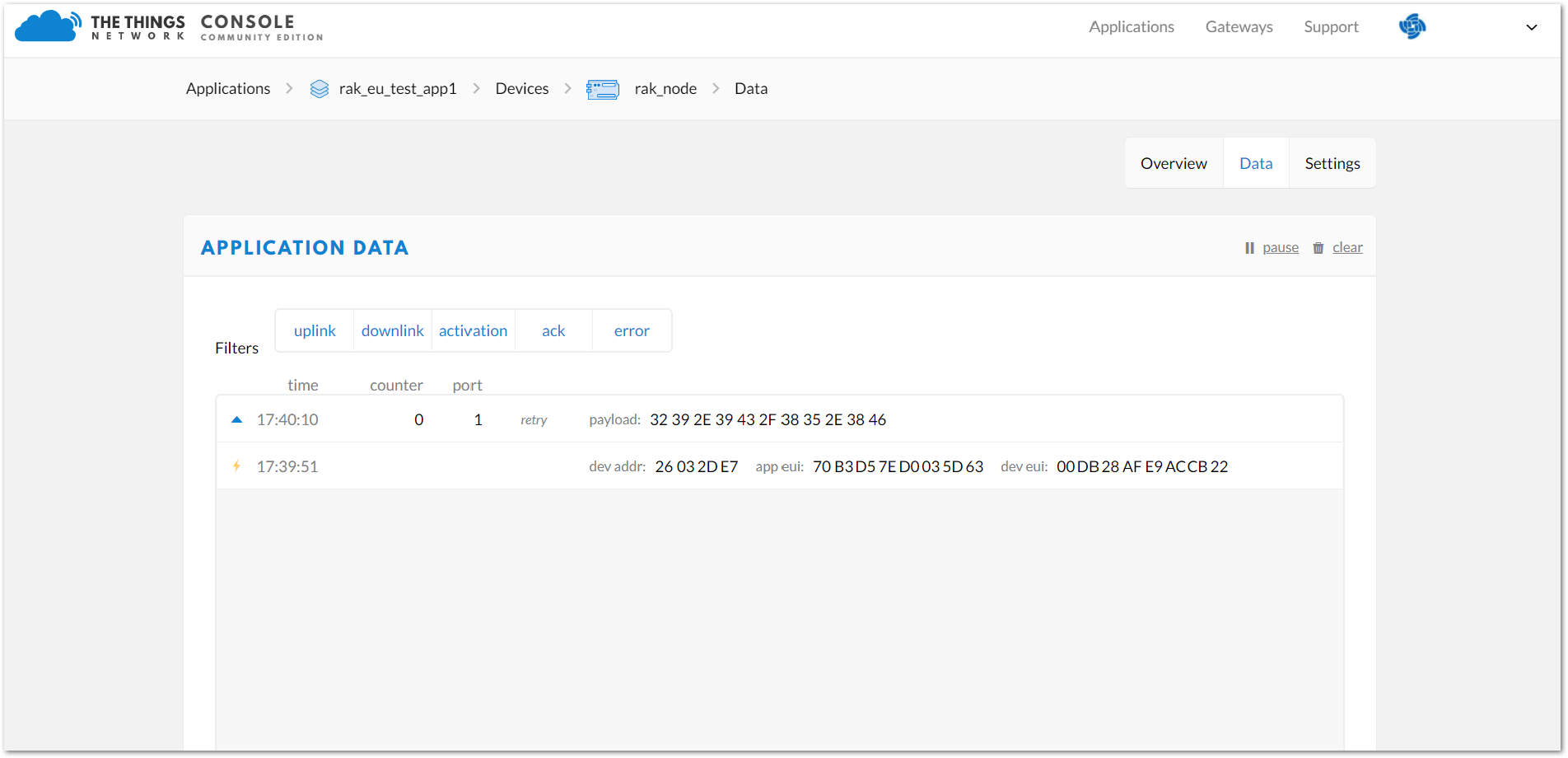 Figure 1: Data received by the TTN
Figure 1: Data received by the TTNABP Mode
Configure the ABP Mode on the Platform
- To join TTN in ABP mode, first, it is required to change the activation method to ABP. This is done on the TTN website under the “Device Settings” page.
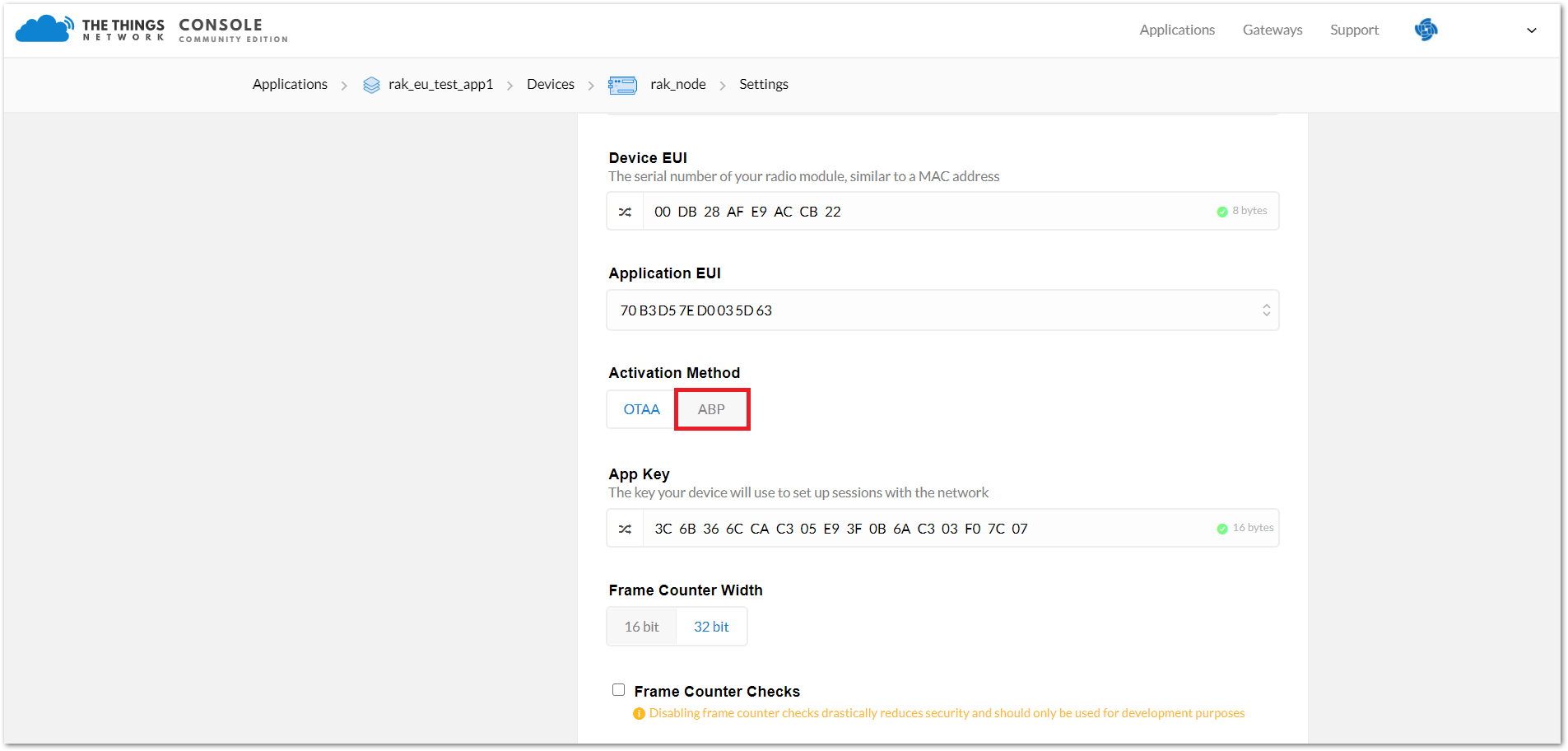 Figure 1: TTN Console, change the activation mode to ABP
Figure 1: TTN Console, change the activation mode to ABP- For ABP mode, the TTN parameters needed are the following: Device Address, Network Session Key, and App Session Key.
These fields can be left empty in the form and TTN will complete them with random values. In other cases, you can complete them with specific values.
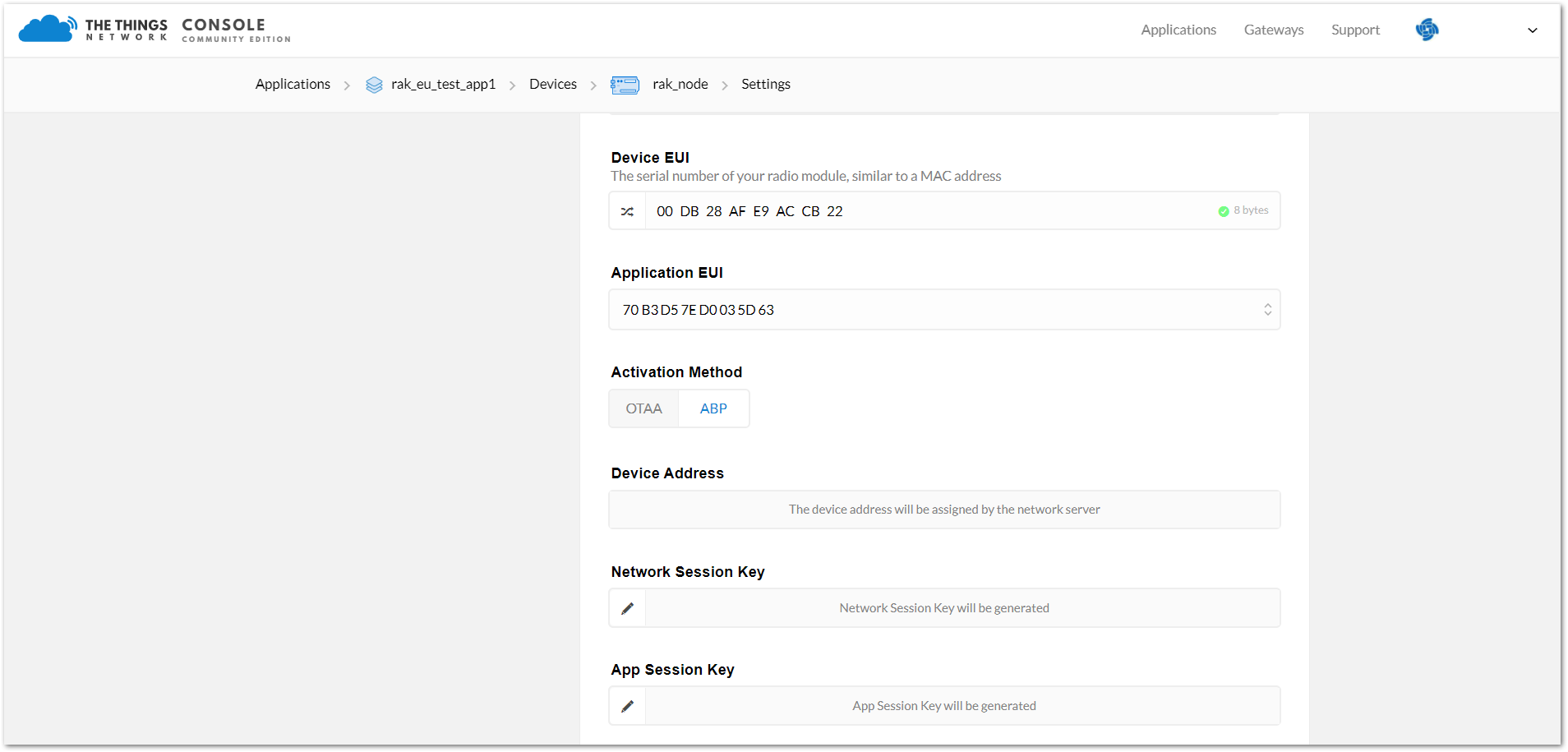 Figure 1: TTN Console ABP join parameters
Figure 1: TTN Console ABP join parameters- After completing the activation mode change, the device parameters will be summarized the same, as shown in Figure 21.
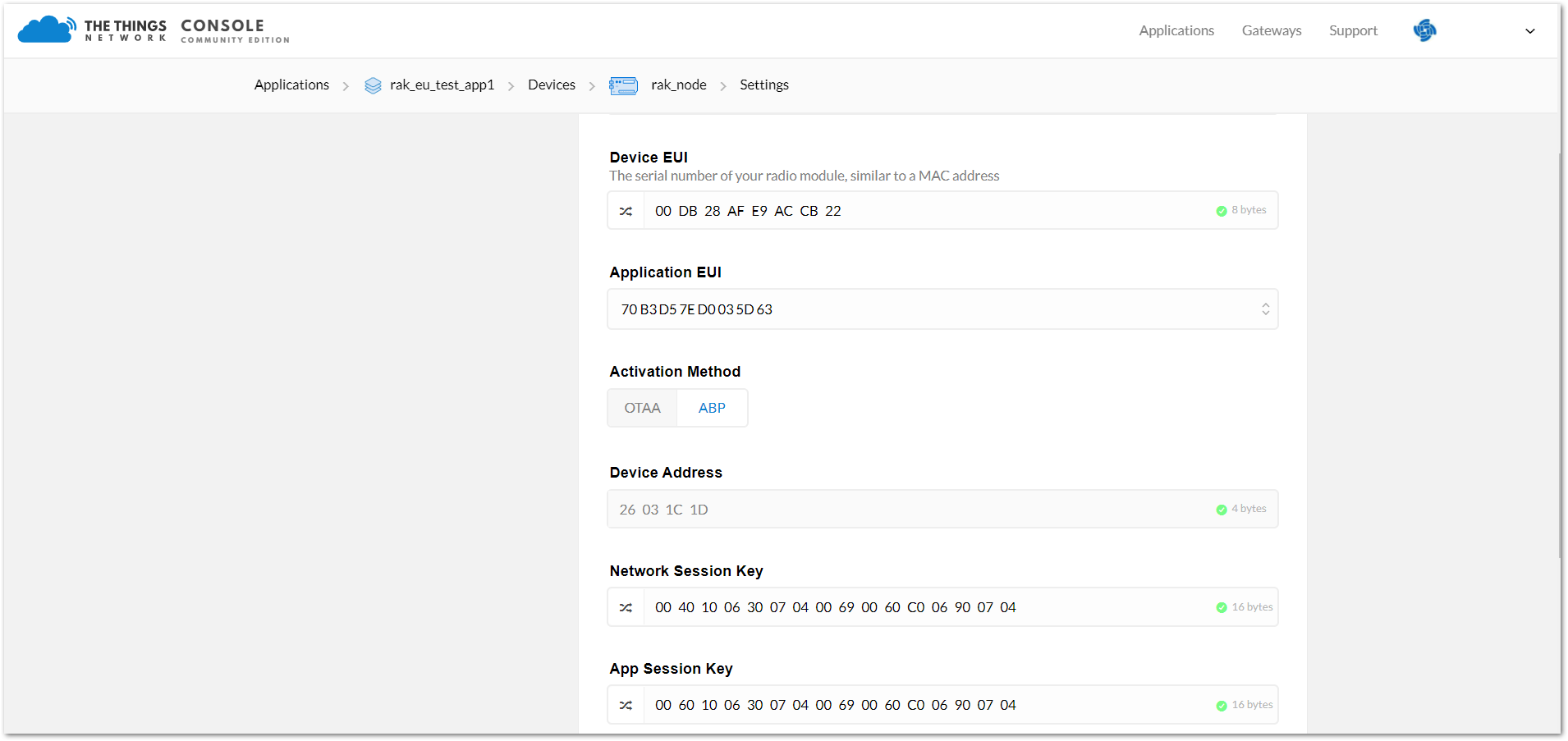 Figure 1: TTN Console, ABP mode configuration finalized
Figure 1: TTN Console, ABP mode configuration finalized-
Update the join parameters on the “conf_app.h” file.
-
Rebuild the RAK4260 LoRa demo.
Connecting to ChirpStack
This section shows how to connect the RAK4260 Evaluation Board to the ChirpStack platform. As described in the ChirpStack website:
“ChirpStack provides open-source components for LoRaWAN networks. Together they form a ready-to-use solution including a user-friendly web interface for device management and APIs for integration. The modular architecture makes it possible to integrate within existing infrastructures. All components are licensed under the MIT license and can be used for commercial purposes.”
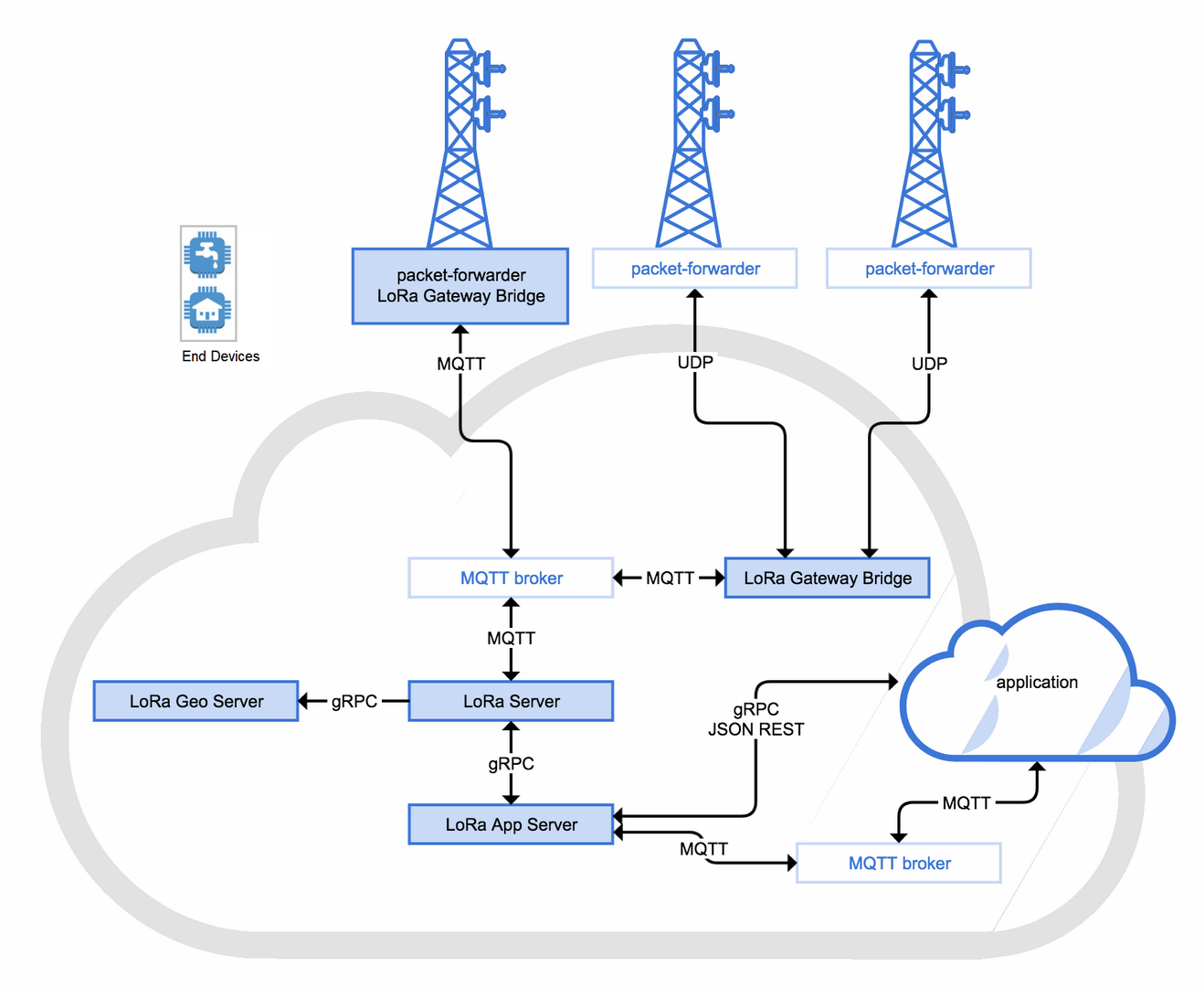 Figure 1: RAK4260 Evaluation Board in the context of the ChirpStack platform
Figure 1: RAK4260 Evaluation Board in the context of the ChirpStack platformThe architecture of the ChirpStack platform is shown in Figure 22. Similar to the case of TTN, the RAK4260 Evaluation board is an End Device and will transmit the data to the backend servers through a LoRa gateway. For a more technical understanding of the ChirpStack components, refer to the Architecture page of ChirpStack.
To register the device to the ChirpStack network server, you must choose either ABP or OTAA mode.
Create a new Application
-
To connect the RAK4260 Evaluation Board to ChirpStack, first, you need to create an Application.
-
Go to the Applications section then click on the “+ CREATE” button.
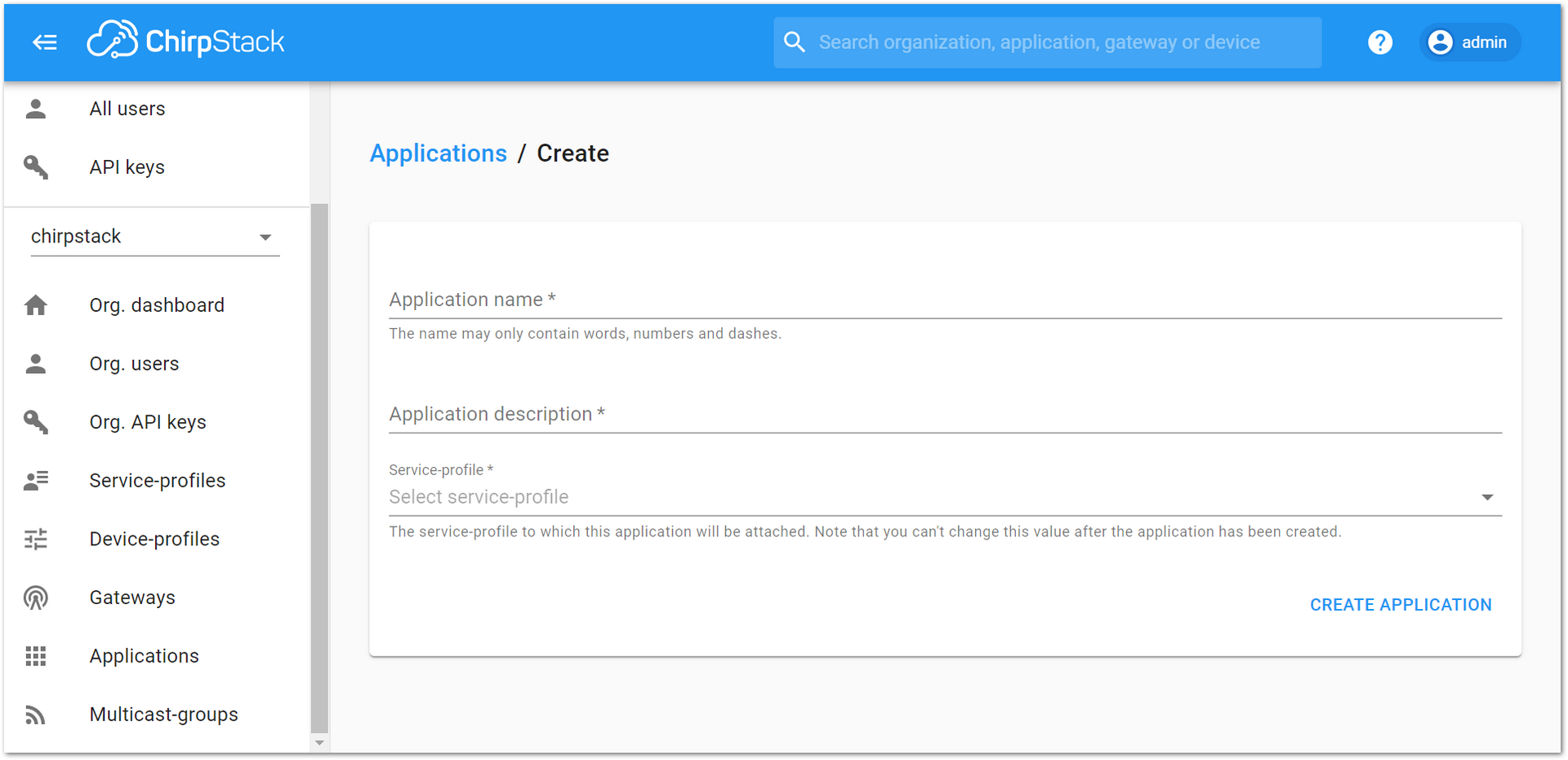 Figure 1: Creating a new Application on the RAK’s ChirpStack LoRaServer
Figure 1: Creating a new Application on the RAK’s ChirpStack LoRaServer-
Create an Application named rak4260_node. Fill in the required fields, as shown in Figure 24.
-
To finish, click the “CREATE APPLICATION” button.
ChirpStack LoraServer supports multiple system configurations, with only one by default. By default, a new Application should be created, although it is possible to reuse the existing ones.
- Application Name: rak4260_node
- Application Description: RAK4260 EVB application
- Service profile: This field will select the system profile.
The Application Description field is just a descriptive text.
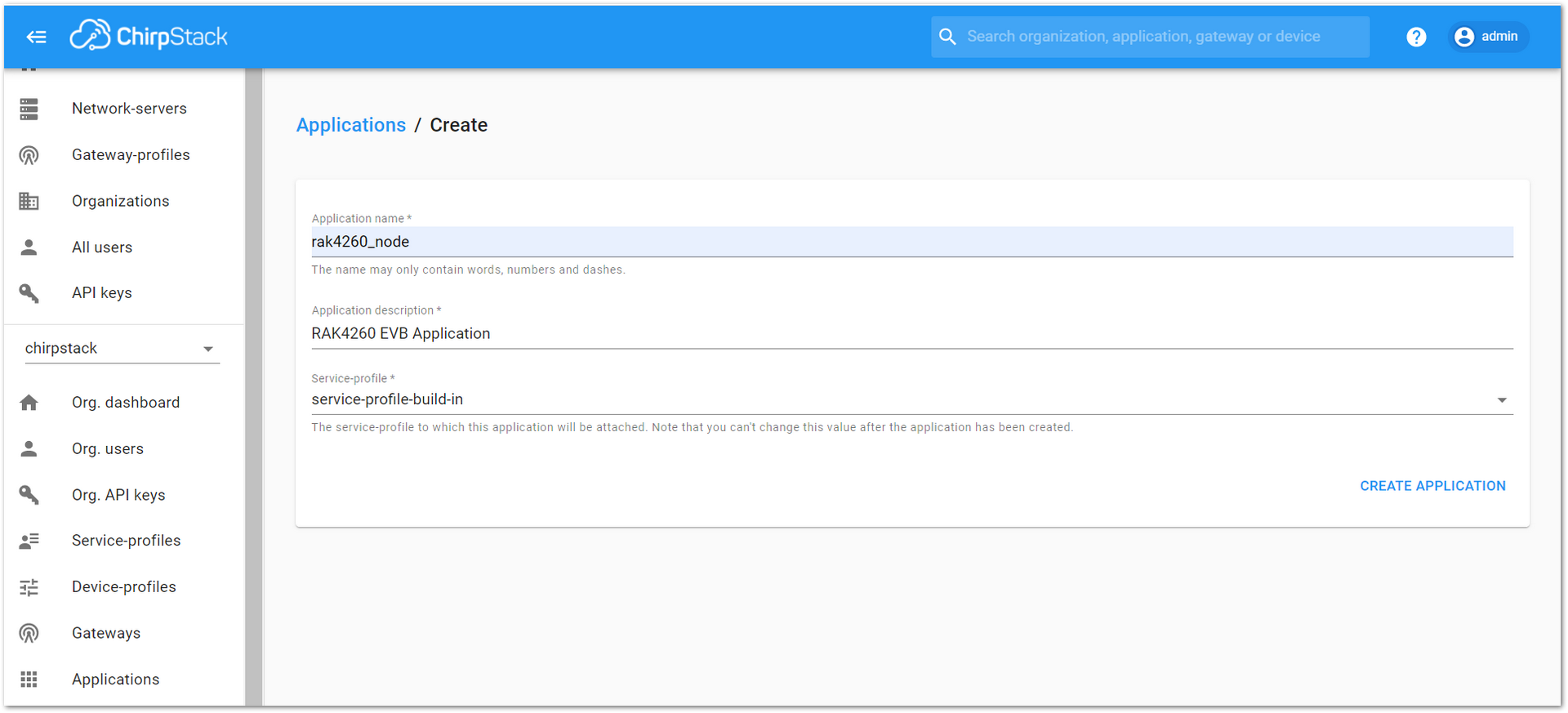 Figure 1: Filling parameters of an Application on the RAK’s ChirpStack LoRaServer
Figure 1: Filling parameters of an Application on the RAK’s ChirpStack LoRaServerRegistering a new device
- Click on the Application rak4260_node created in the previous step.
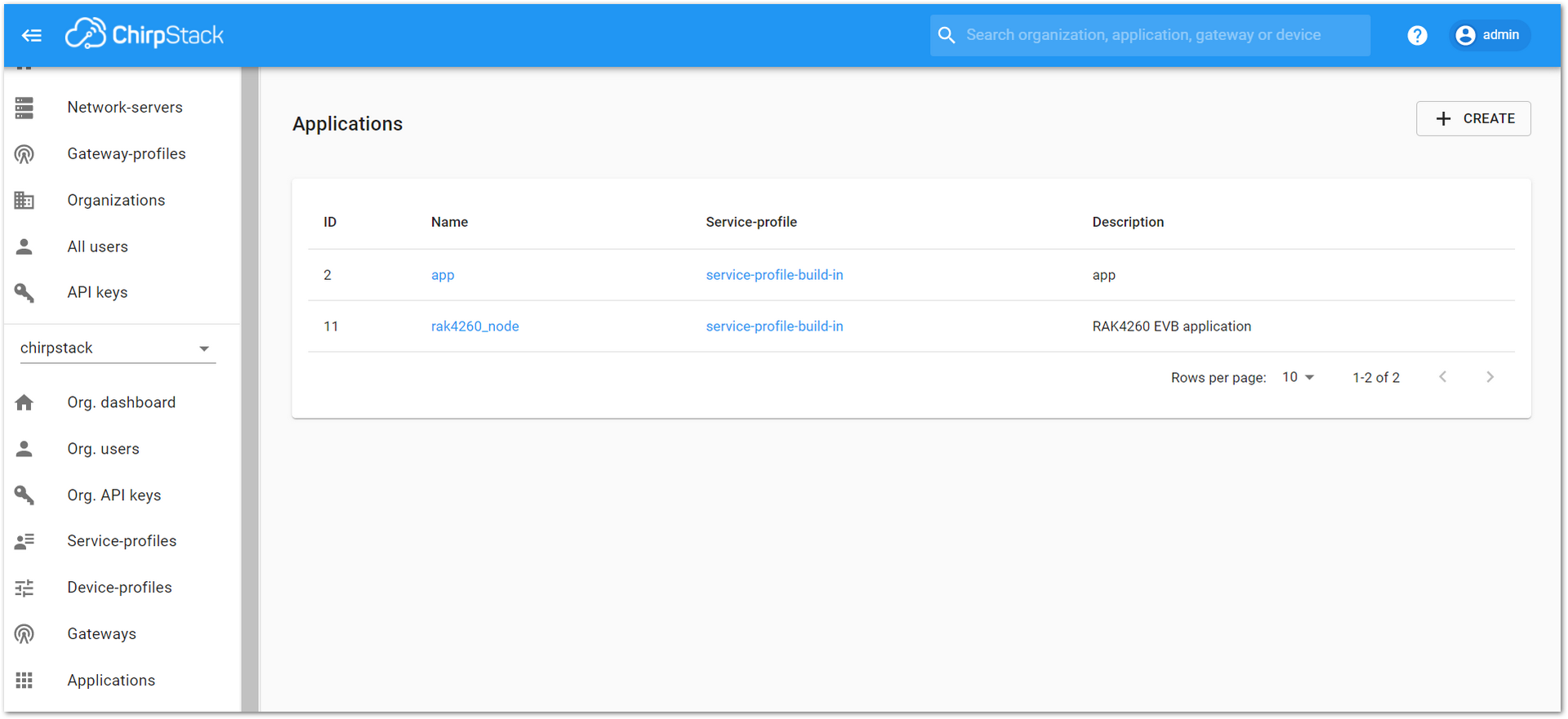 Figure 1: List of applications created on the RAK’s ChirpStack LoRaServer
Figure 1: List of applications created on the RAK’s ChirpStack LoRaServer- Select the “DEVICES” tab, as shown in Figure 26.
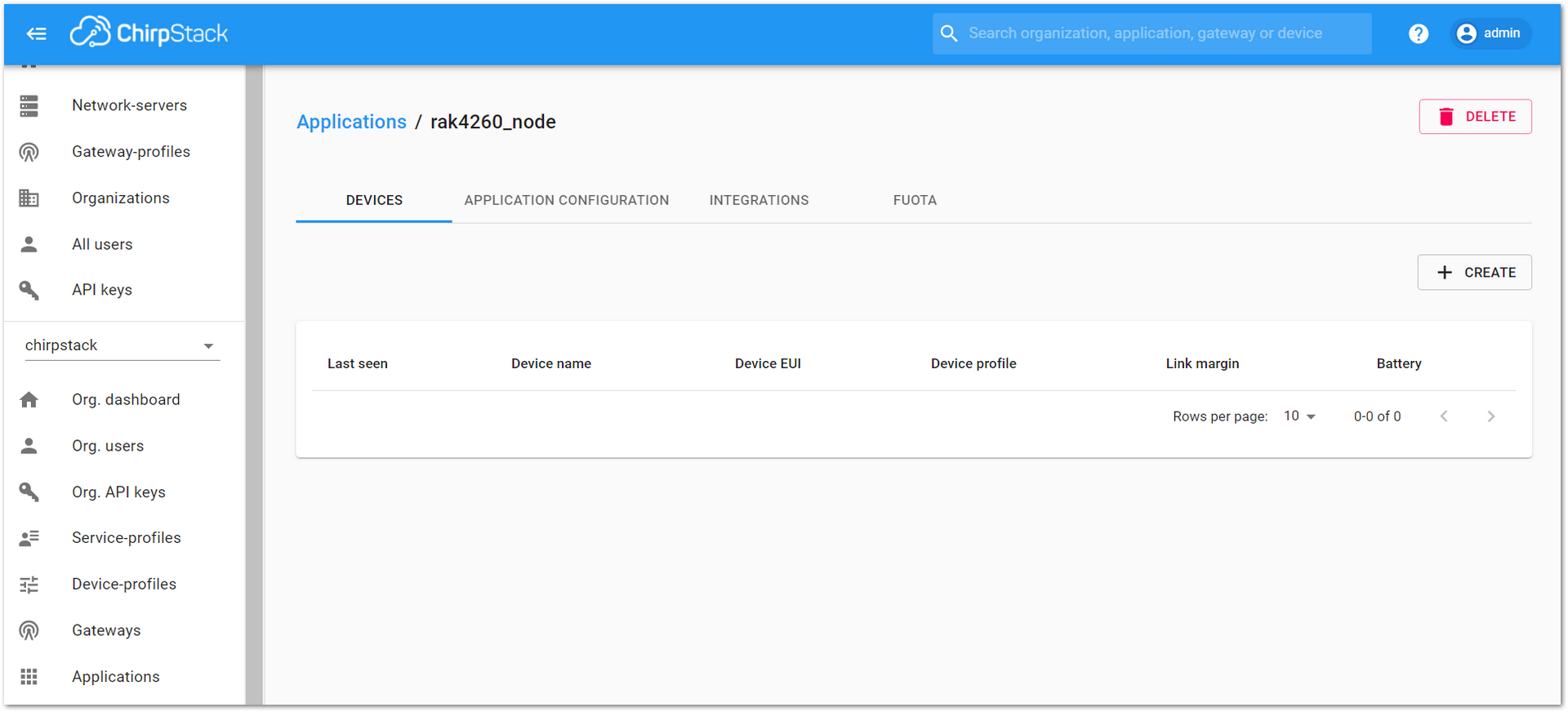 Figure 1: Device tab of an Application on the RAK’s ChirpStack LoRaServer
Figure 1: Device tab of an Application on the RAK’s ChirpStack LoRaServer- Inside of the “DEVICES” tab, create a new device (LoRa node) by clicking on the “+ CREATE” button.
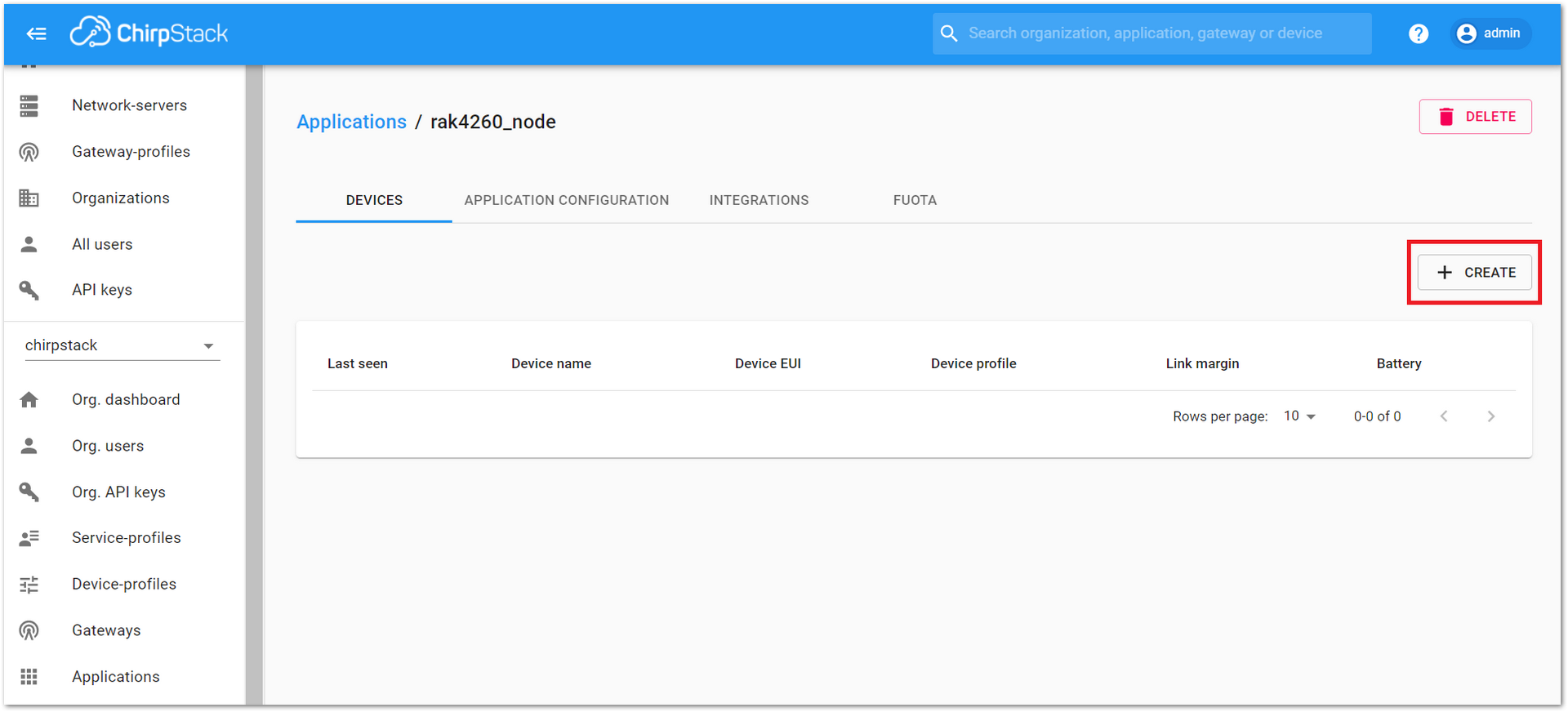 Figure 1: Add a new device at DEVICES tab of an Application on the RAK’s ChirpStack LoRaServer
Figure 1: Add a new device at DEVICES tab of an Application on the RAK’s ChirpStack LoRaServer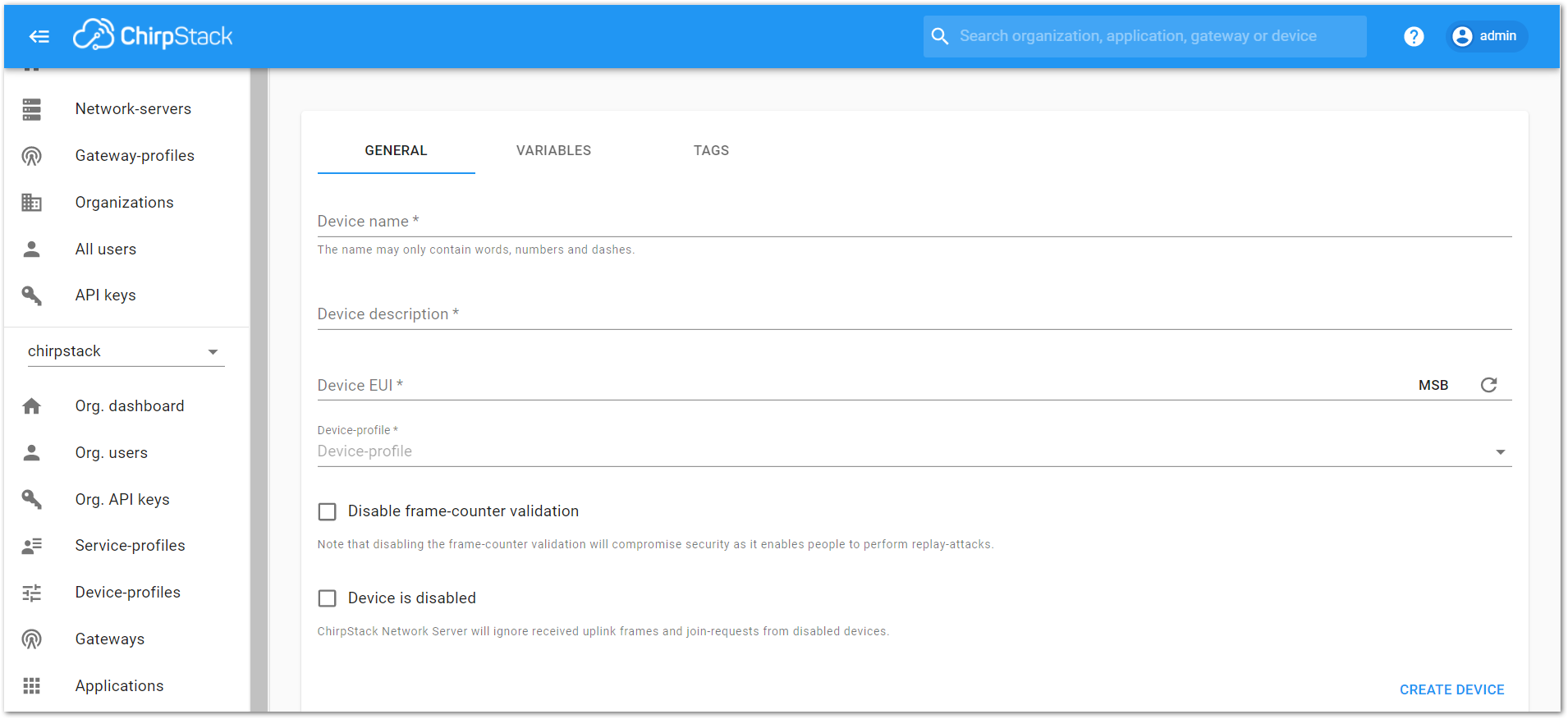 Figure 1: New device registration form on the RAK’s ChirpStack LoRaServer
Figure 1: New device registration form on the RAK’s ChirpStack LoRaServer- Fill in the parameters requested as appears in Figure 28:
- Device name and Device description: These are just descriptive texts.
- Device EUI: This interface allows you to generate a Device EUI automatically by clicking the icon highlighted in red in Figure 29. You can also add a specific Device EUI directly in the form.
- Device-profile: To join in OTAA mode, select “device_profile_otaa” or "device_profile_abp" to join in ABP mode.
ChirpStack doesn’t support AS923 in ABP mode.
- Press the “CREATE DEVICE” button at the bottom of this page to finish the device registration.
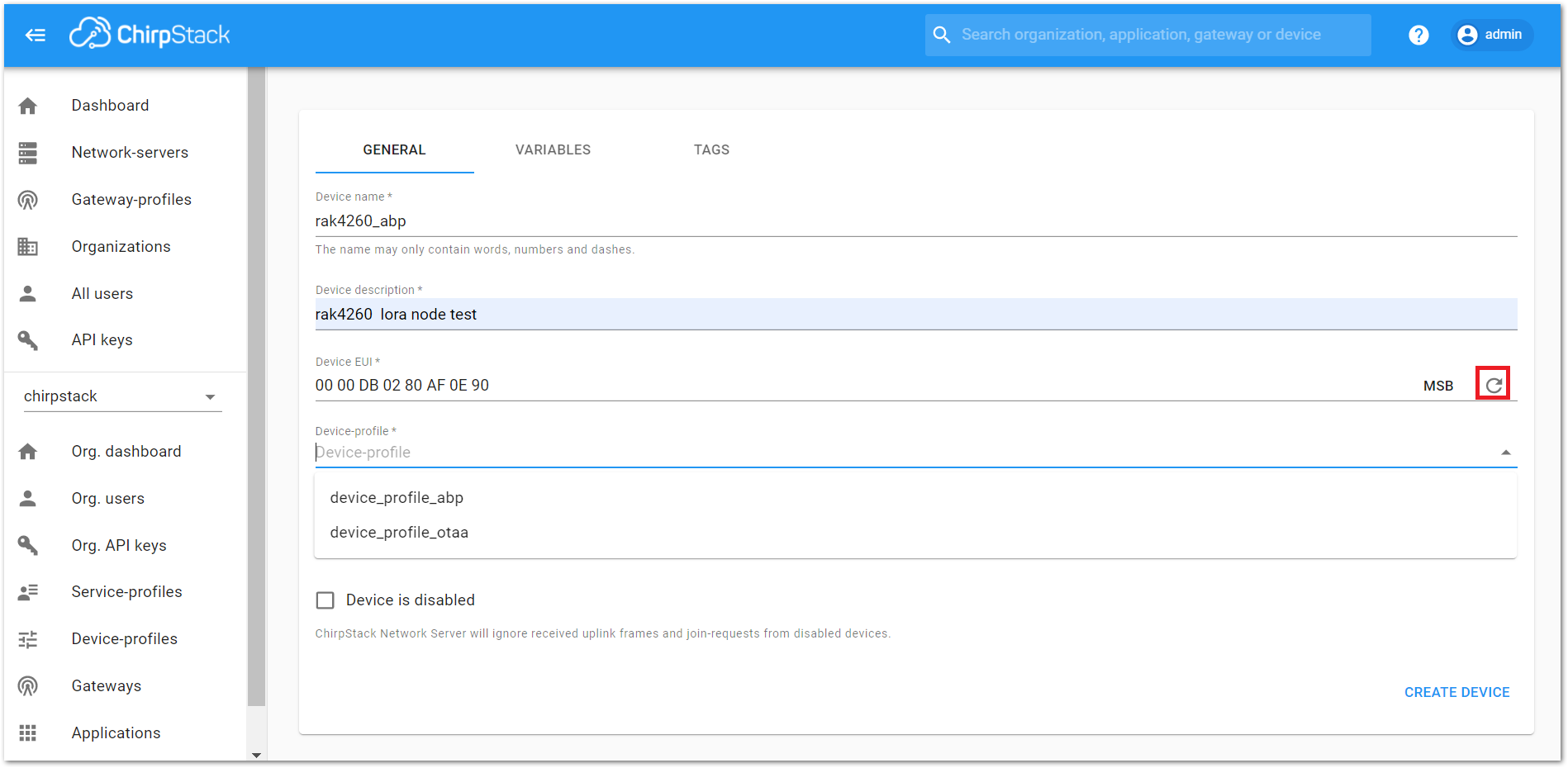 Figure 1: Generate a new Device EUI in the device registration form
Figure 1: Generate a new Device EUI in the device registration formLoRaWAN Join Mode
The LoRaWAN specification defines that to join in a LoRaWAN network, each end-device has to be personalized and activated. Activation can be done either via Over-The-Air-Activation (OTAA) or via Activation-By-Personalization (ABP). In OTAA, the end-device previously personalized is activated when is deployed or reset. In ABP, personalization and activation are done as a single step.
OTAA Mode
Configure the OTAA Mode on the platform
- If you have selected “device_profile_otaa”, then after the device is created, an “Application Key” must be also created for this device.
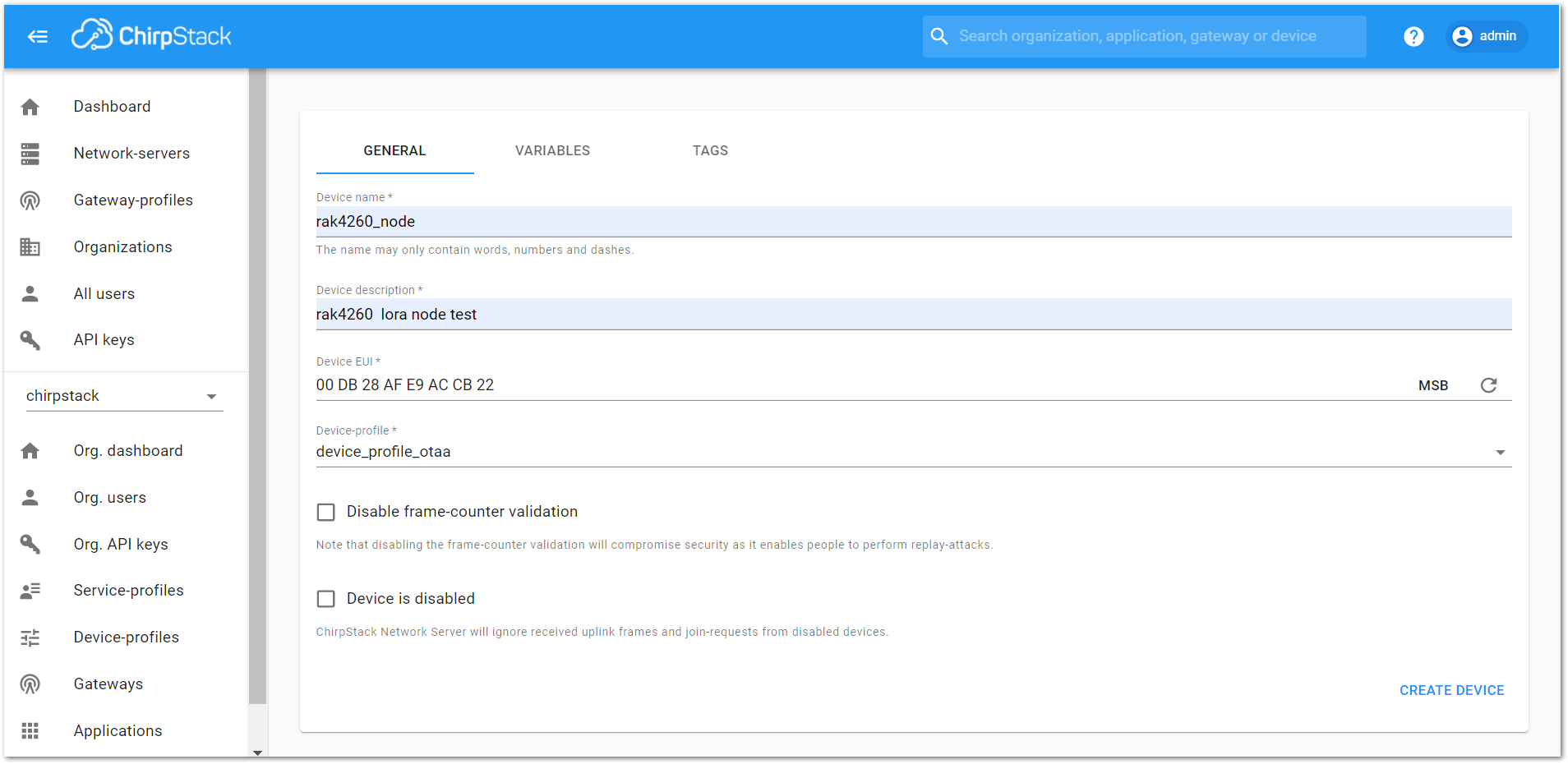 Figure 1: Choosing OTAA mode in the device registration form
Figure 1: Choosing OTAA mode in the device registration form- A previously created “Application Key” can be entered here, or a new one can be generated automatically by clicking the icon highlighted in red.
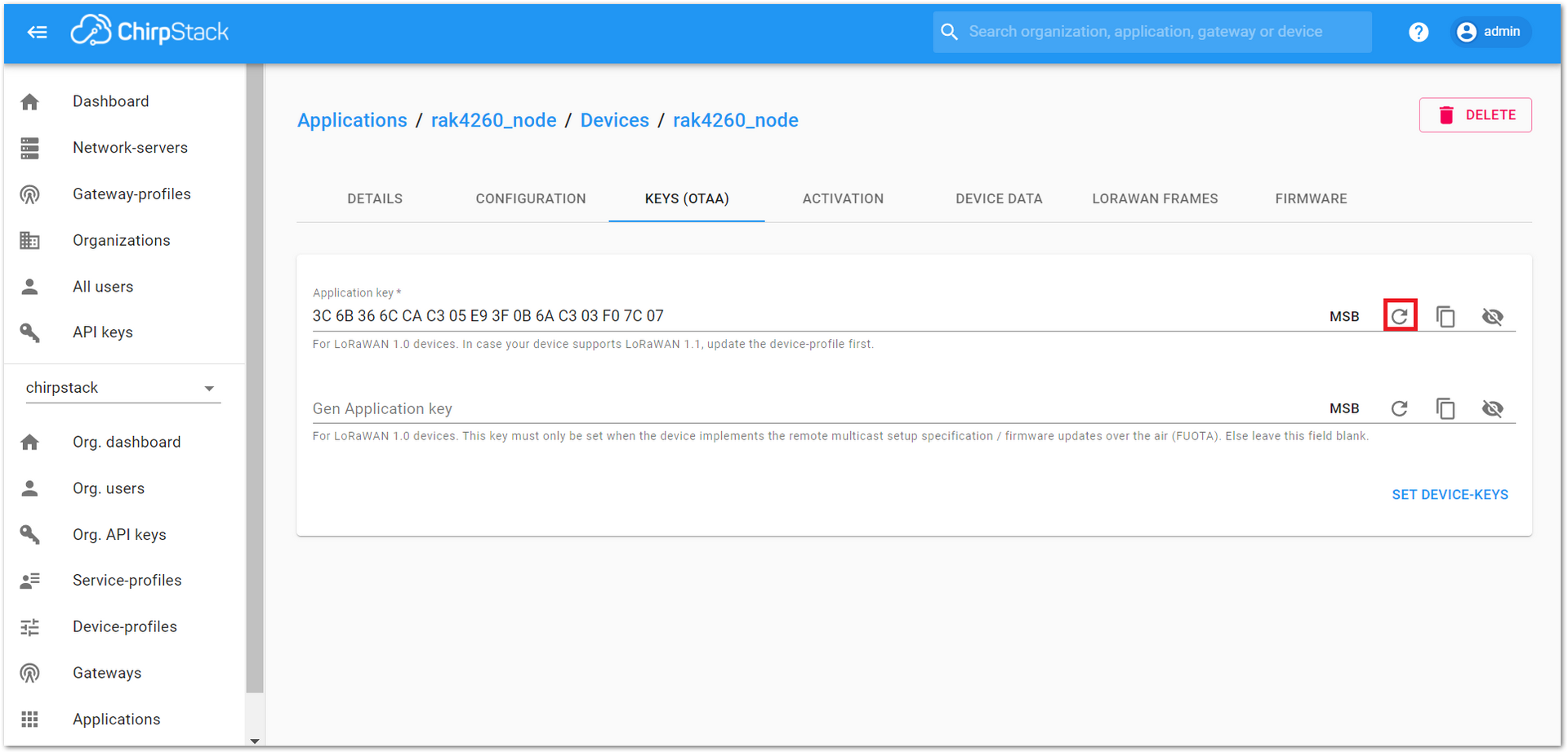 Figure 1: Application Key for the OTAA mode in the device registration form
Figure 1: Application Key for the OTAA mode in the device registration form- Once the Application Key is added to the form, the process can be finalized by clicking the “SET DEVICE-KEYS” button.
- As shown in Figure 32, a new device should be listed in the “DEVICES” tab. The most important parameters, such as the “Device EUI”, are shown in the summary.
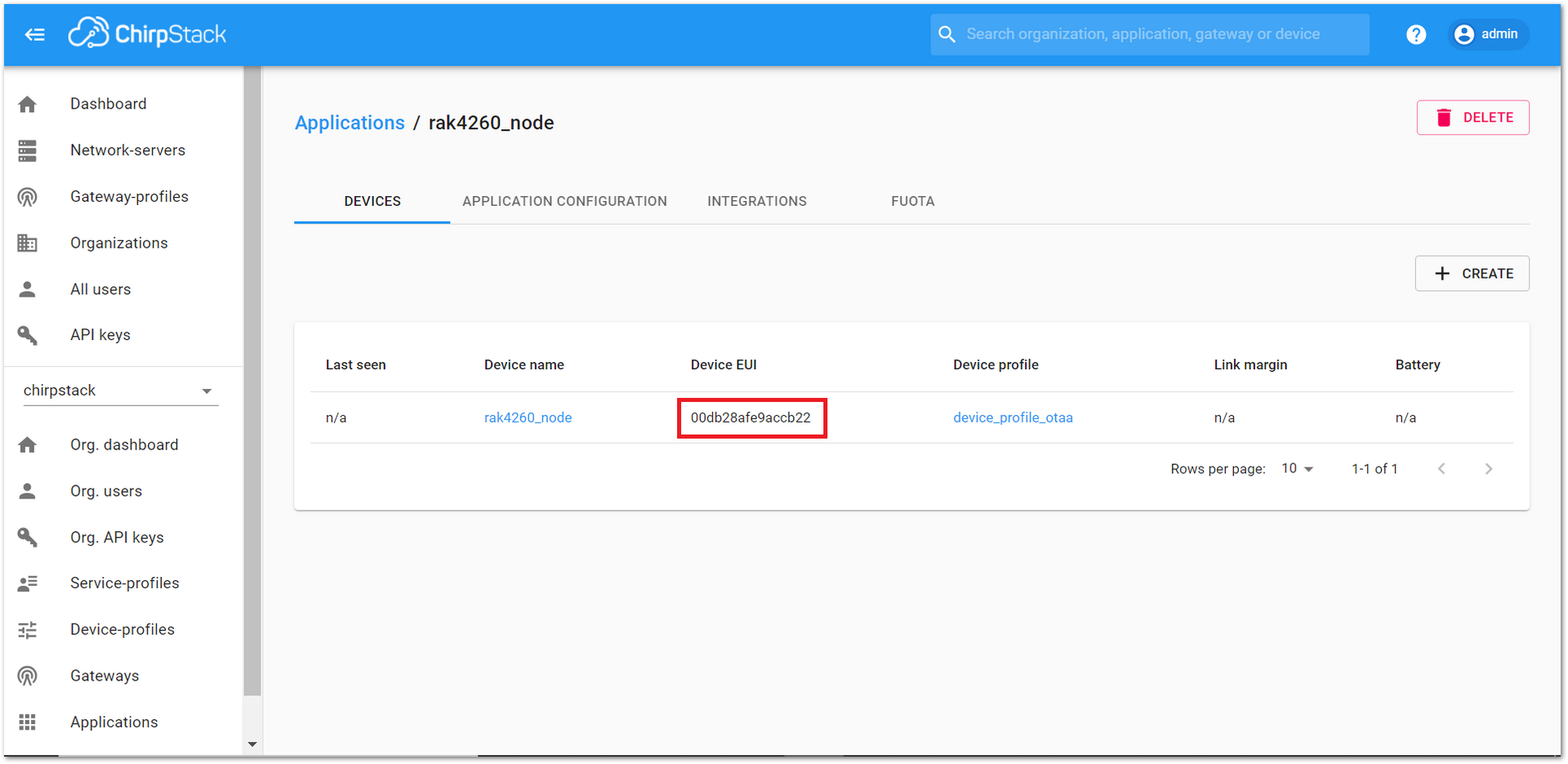 Figure 1: New crated device listed in the DEVICES tab
Figure 1: New crated device listed in the DEVICES tab- To end the process, it is a good practice to review that the Application Key” is properly associated with this device. The “Application Key” can be verified in the “KEYS(OTAA)” tab.
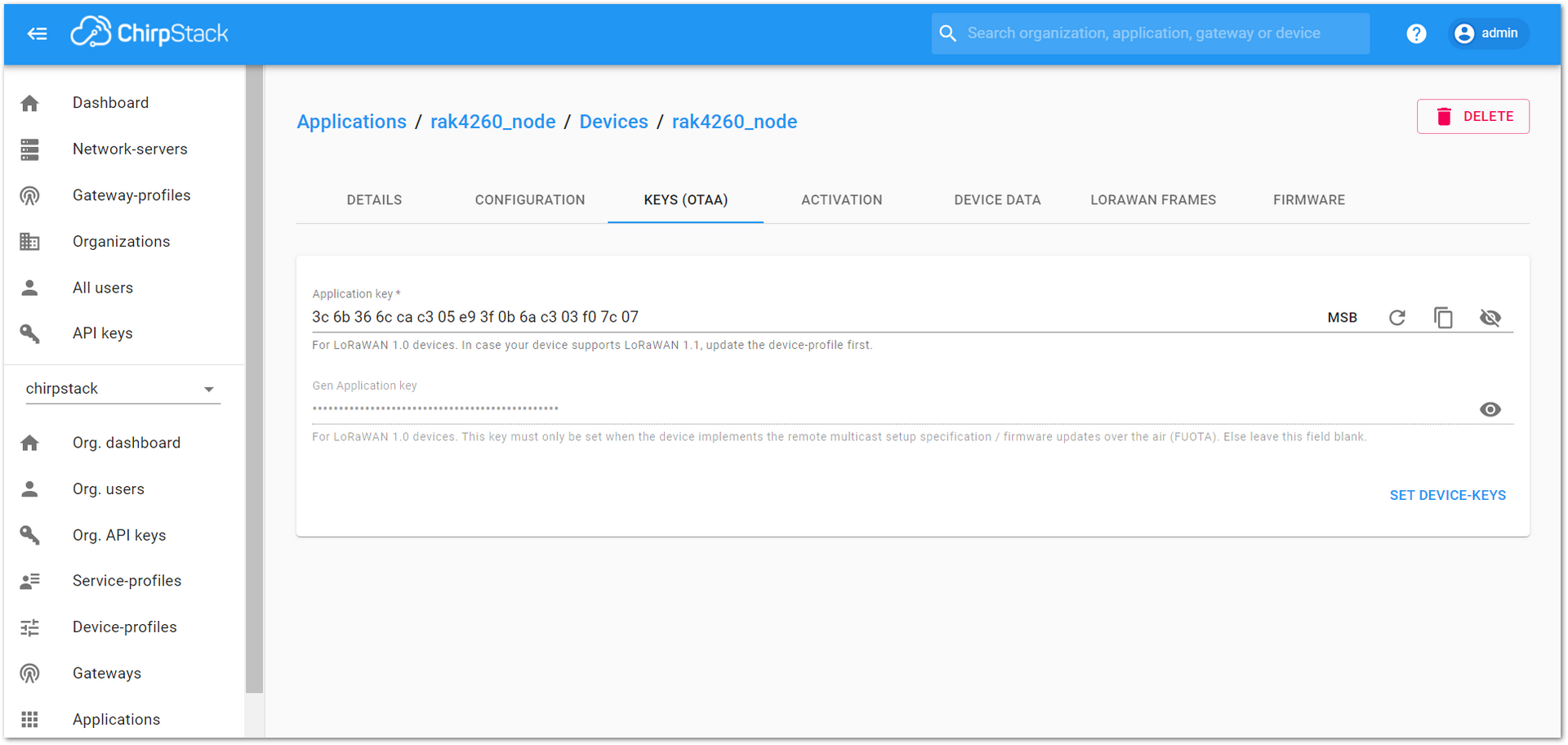 Figure 1: Application Key associated to the new device
Figure 1: Application Key associated to the new deviceStandard OTAA mode requires the Device EUI, Application Key, and the Application EUI. But in ChirpStack’s implementation, only Device EUI and the Application Key are mandatory. The Application EUI is not required and is not recorded in the Application tab.
ABP Mode
Configure the ABP mode on the platform
During the registration of a new device, if “device_profile_abp” is selected, then the ChirpStack platform will assume that this device will join the LoRaWAN network using the ABP mode.
- Fill in the parameters requested as appears in Figure 34:
- Device name and Device description: These are just descriptive texts.
- Device EUI: You can also add a specific Device EUI directly in the form.
- Once these parameters are filled, click the “CREATE DEVICE” button.
Check the Disable frame-counter validation to prevent the node-side counting the frame starting from zero after the node is powered on during the test, and the server cannot synchronize the node-side counting, causing the transmission to fail.
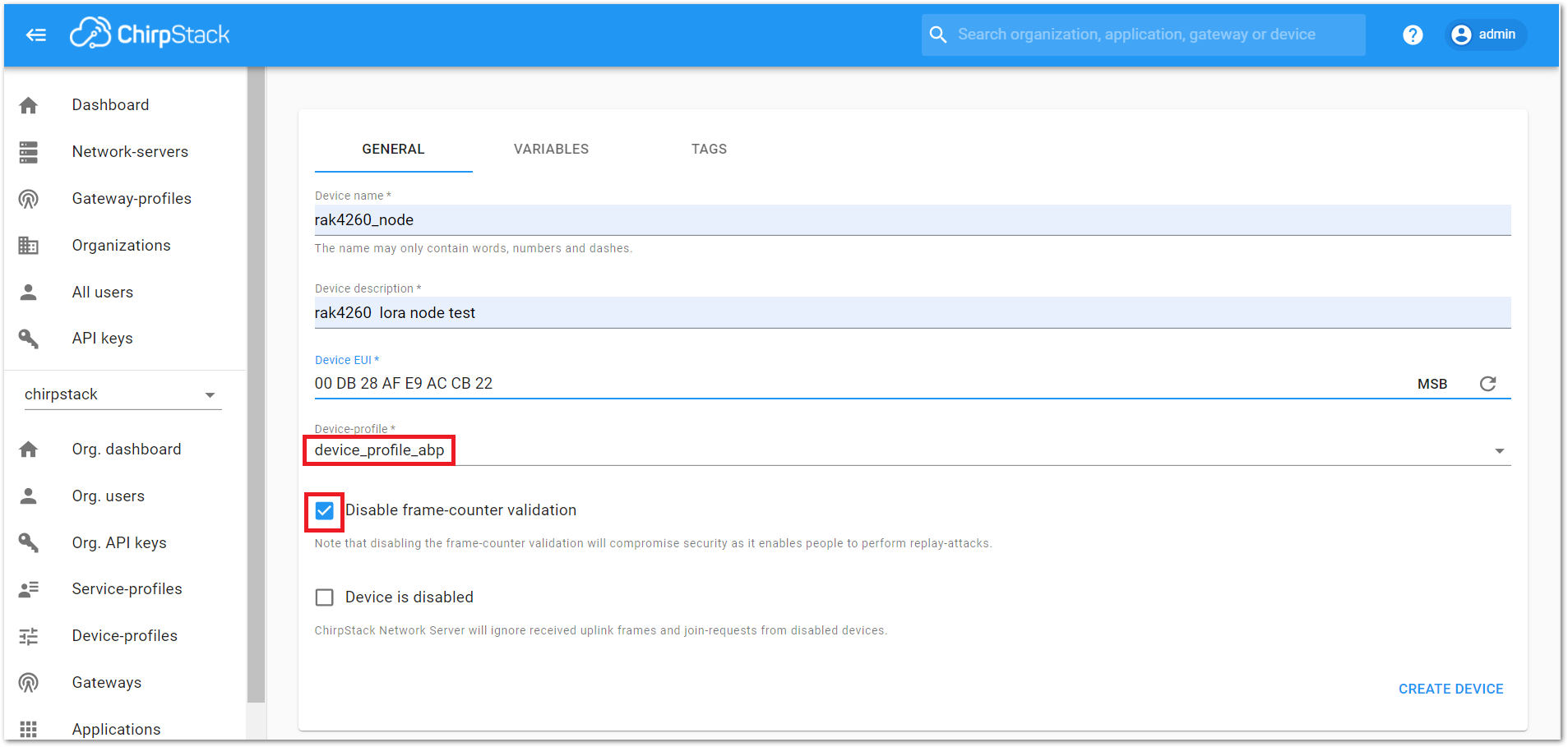 Figure 1: ChirpStack Console, configuring a device in ABP mode
Figure 1: ChirpStack Console, configuring a device in ABP modeAfter selecting the ABP mode, the following parameters appear in the “ACTIVATION” tab, as shown in Figure 35:
- Device address
- Network session key
- Application session key
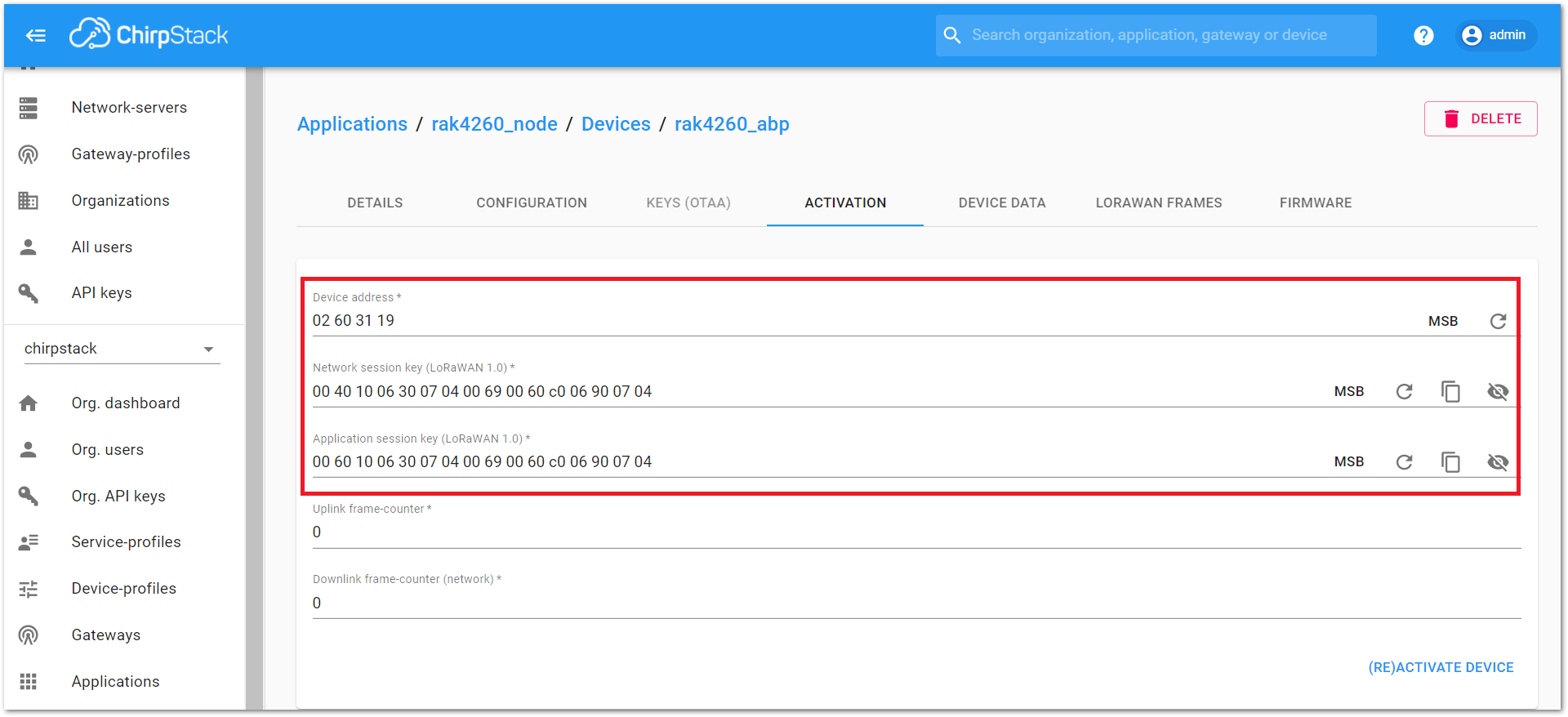 Figure 1: ChirpStack Console, parameters required for the ABP mode
Figure 1: ChirpStack Console, parameters required for the ABP mode- The parameters can be generated as random numbers by the platform or can be set with values. Once these parameters are filled properly, the process is completed by clicking on the “(RE)ACTIVATE DEVICE” button.
Capturing LoRaWAN Frames on ChirpStack Console
View LoRaWAN OTAA Frames
- Go to Applications -> rak4260-node -> Devices -> rak4260-node, then select the “LORAWAN FRAMES” tab.
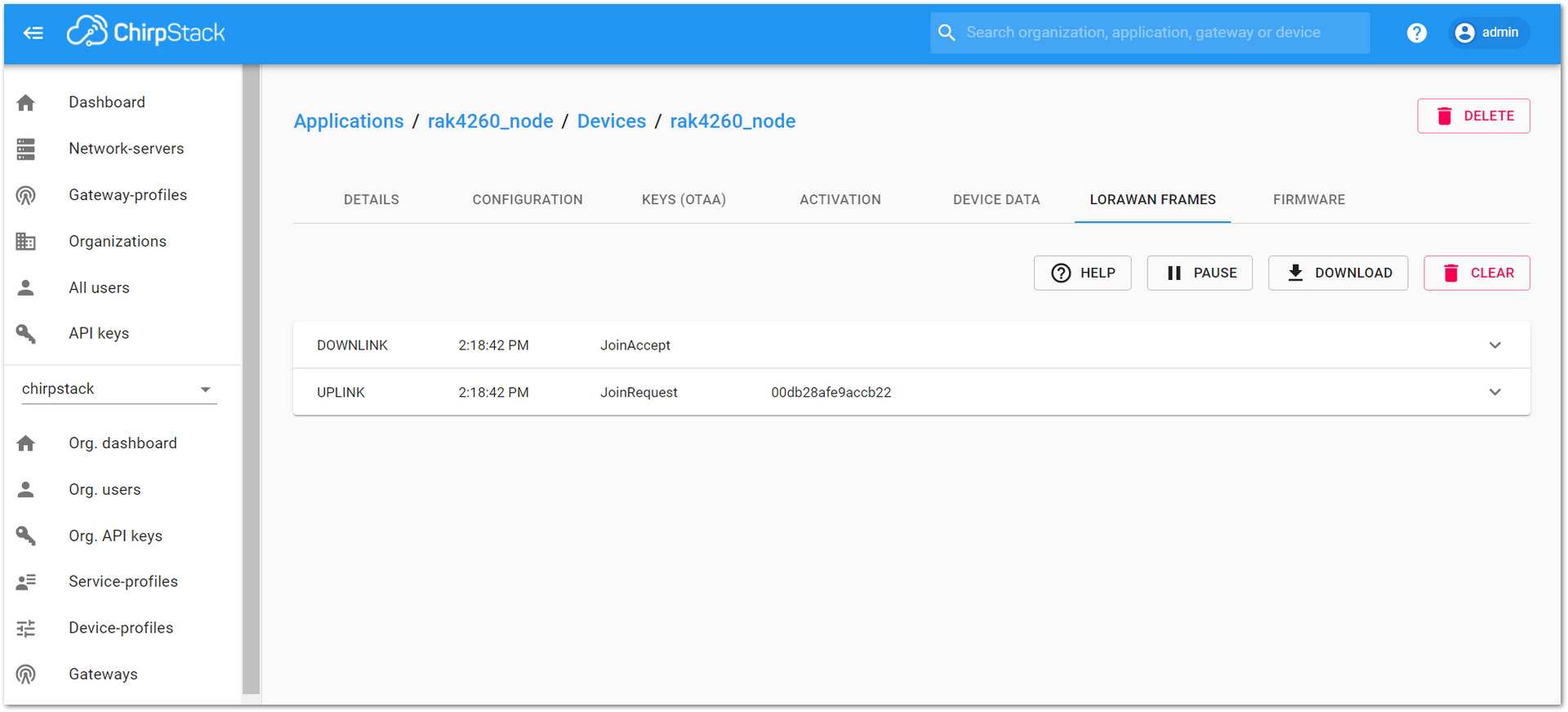 Figure 1: OTAA activation frame
Figure 1: OTAA activation frame- Go to Applications -> rak4260-node -> Devices -> rak4260-node , then select “DEVICE DATA” tab.
 Figure 1: Device data OTAA frame
Figure 1: Device data OTAA frameView LoRaWAN ABP Frames
- Go to Applications -> rak4260-node -> Devices -> rak4260-abp, then select the “LORAWAN FRAMES” tab.
 Figure 1: LoRaWAN ABP frame
Figure 1: LoRaWAN ABP frame- Go to Applications -> rak4260-node -> Devices -> rak4260-abp, then select “DEVICE DATA” tab.
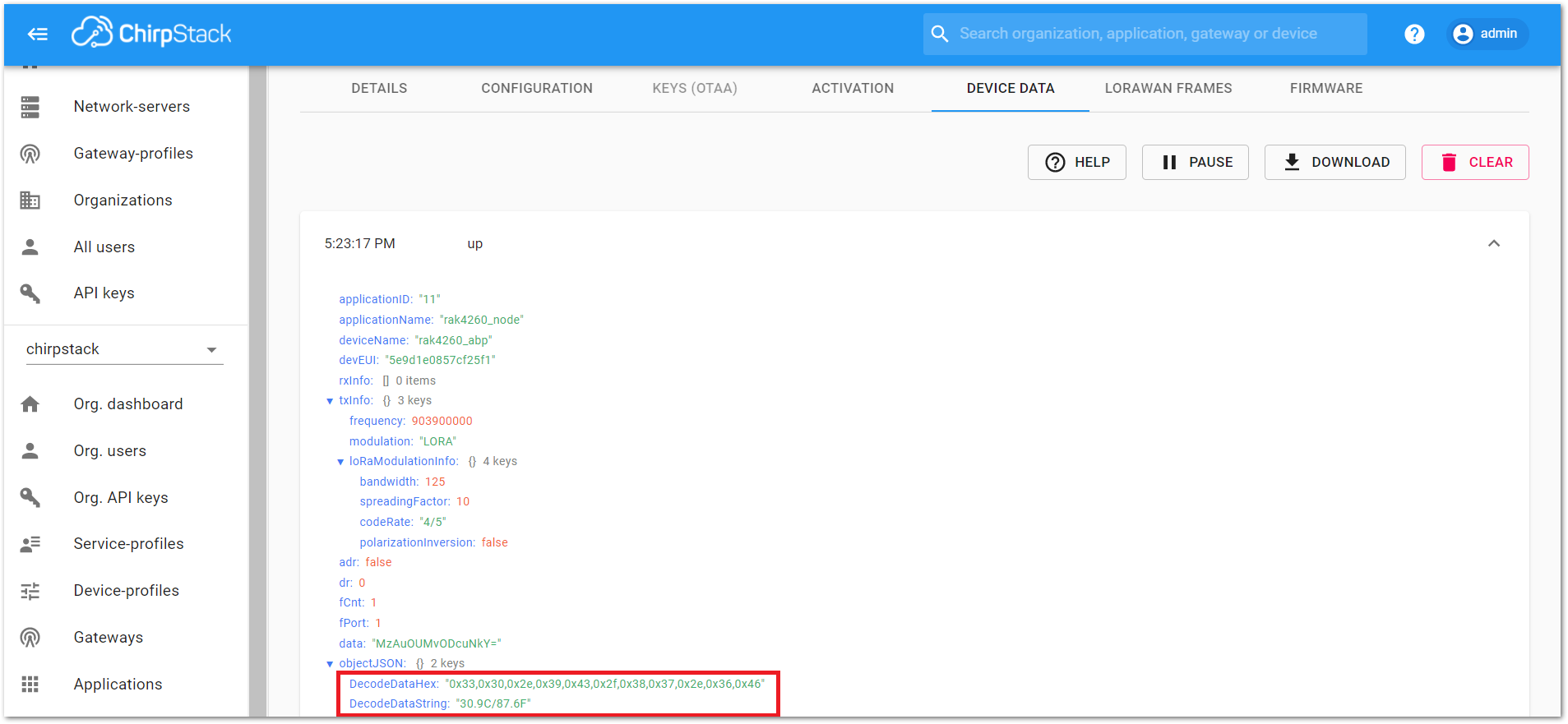 Figure 1: Device data ABP frame
Figure 1: Device data ABP frameLoRa Simple P2P Demo
This example is based on Microchip demo: SAM R34 long-range P2P
Using this project, it is possible to send and receive messages to another nearby RAK4260. The messages can be unicast or broadcast and encrypted or not. The demo does not use RTOS but a task scheduler.
The RAK460 P2P demo can be cloned using the following link:
Use the p2p-rak4260 branch, as shown in Figure 40.
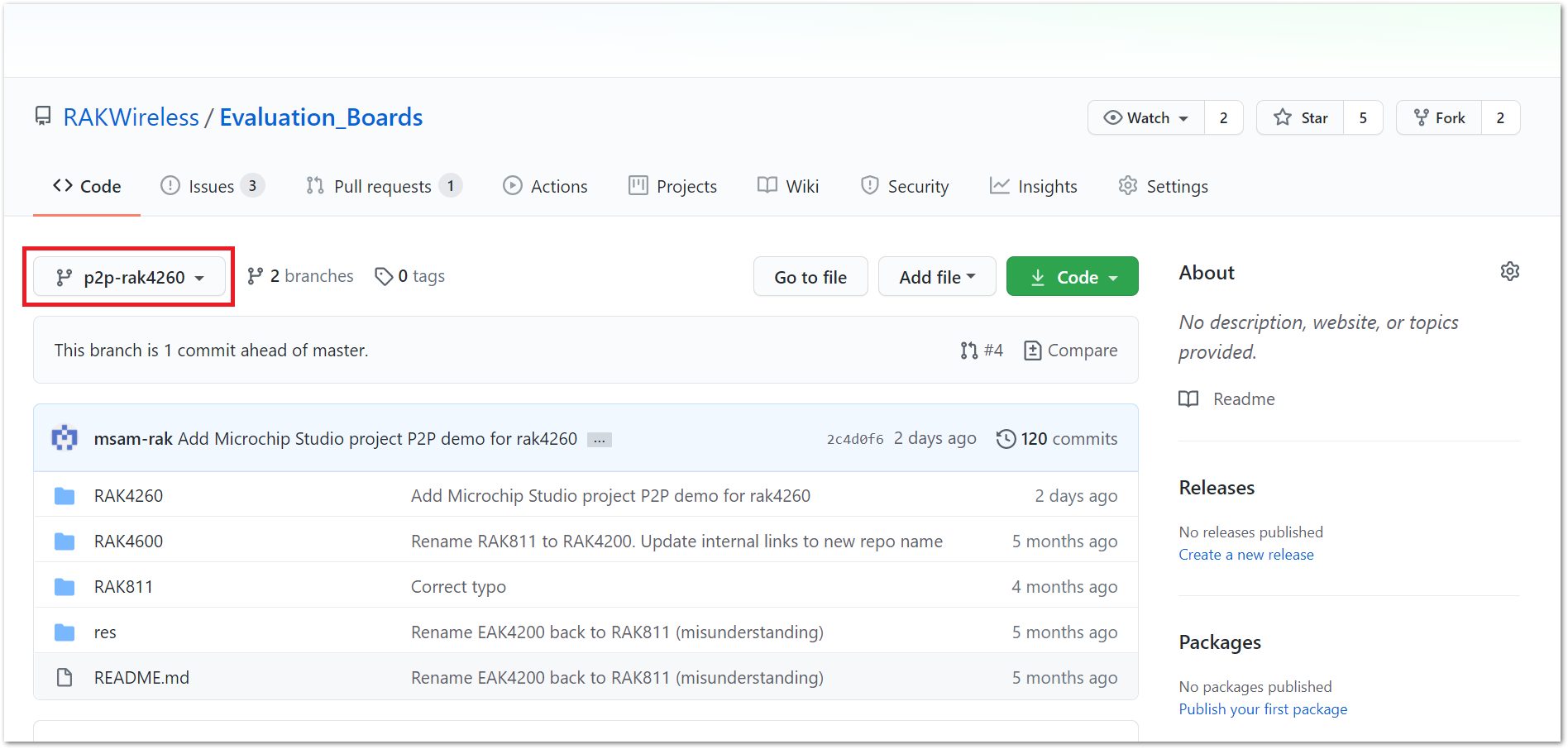 Figure 1: LoRa P2P Demo clone project
Figure 1: LoRa P2P Demo clone project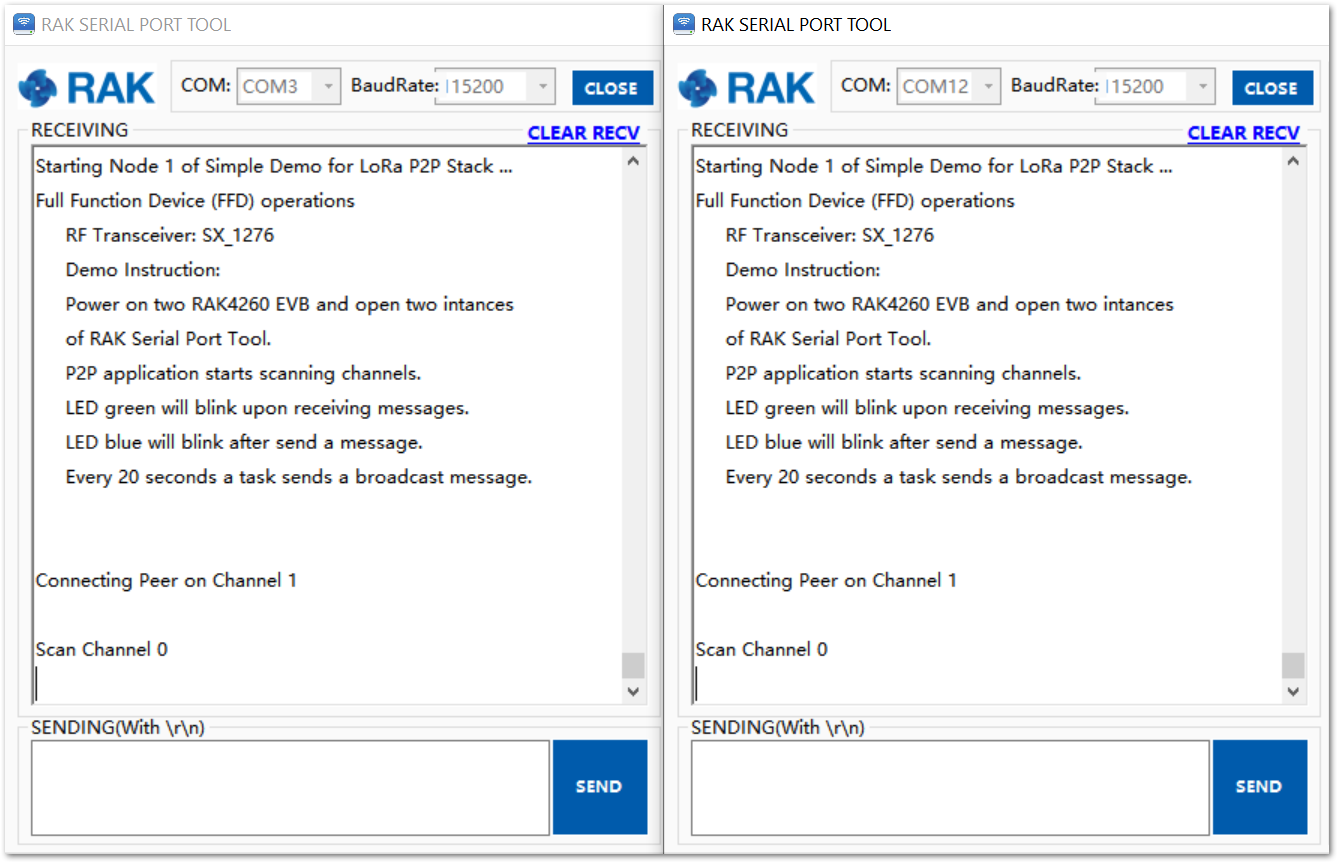 Figure 1: LoRa P2P Demo scanning channels
Figure 1: LoRa P2P Demo scanning channels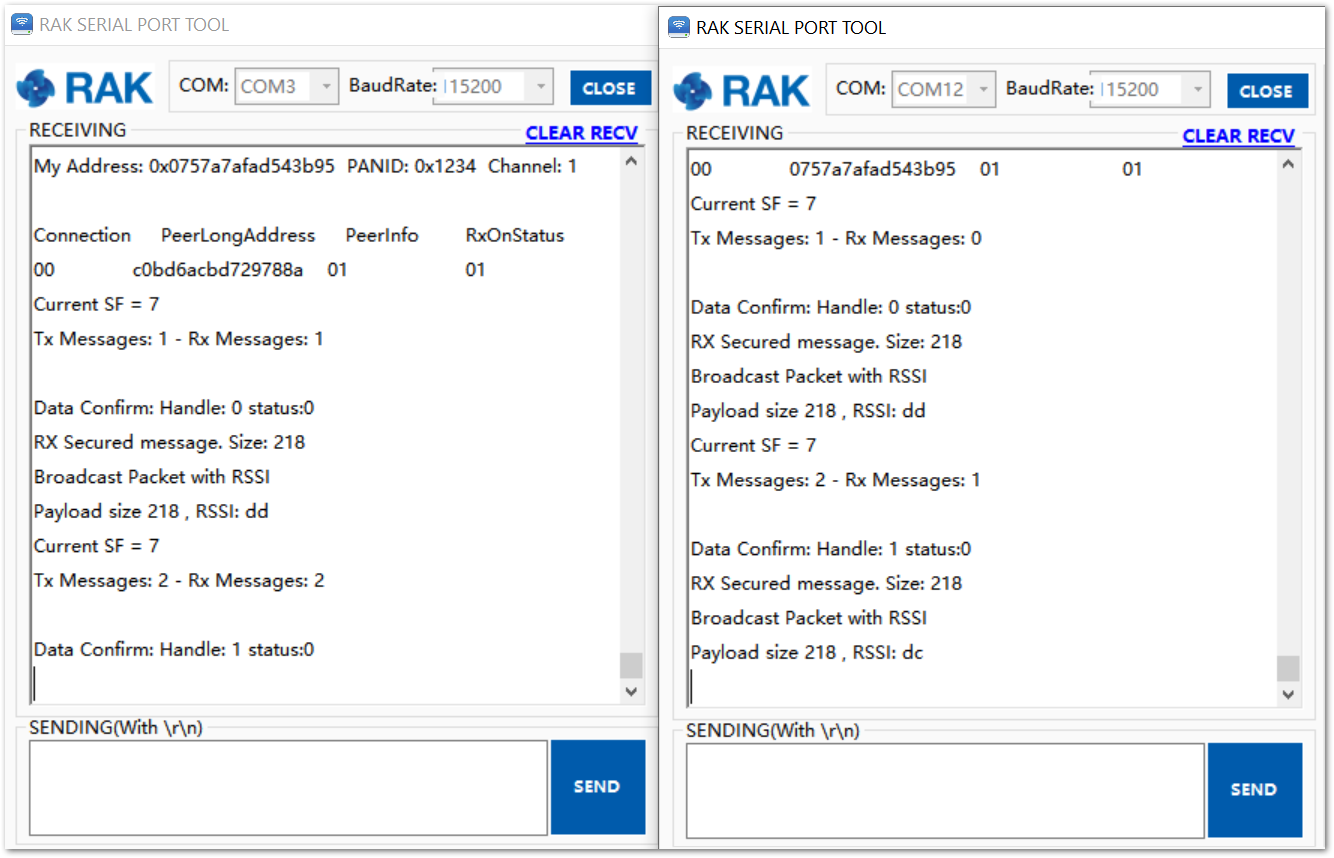 Figure 1: Lora P2P Demo broadcast messages
Figure 1: Lora P2P Demo broadcast messagesMiscellaneous
RAK5005 Core Module Slot Connection to RAK4261
The RAK5005 is the base board that connects the RAK4260 Core Module. It creates the power supply for the attached module and provides additional IO and Sensor support for your project needs.
RAK4261 is a circuit board module for RAK5005 with a pre-soldered RAK4260 LPWAN Module.
Listed below are the accessible pins and data bus of the attached RAK5005 base board on the RAK4260 EVB:
| RAK4261 Pin Definition | Function Name of WisBase | Pin Number | Pin Number | Function Name of WisBase | RAK4261 Pin Definition |
|---|---|---|---|---|---|
| NC | VBAT | 1 | 2 | VBAT | NC |
| GND | GND | 3 | 4 | GND | GND |
| 3V3 | 3V3 | 5 | 6 | 3V3 | 3V3 |
| PA25_USB_P | USB+ | 7 | 8 | USB- | PA24_USB_N |
| NC | VBUS | 9 | 10 | SW1 | NC |
| UART1_TX/PA04 | TXD0 | 11 | 12 | RXD0 | UART1_RX/PA05 |
| RST | RESET | 13 | 14 | LED1 | PA27 |
| PA06 | LED2 | 15 | 16 | LED3 | PA07 |
| 3V3 | VDD | 17 | 18 | VDD | 3V3 |
| SDA/PA16 | I2C1_SDA | 19 | 20 | I2C1_SCL | SCL/PA17 |
| PA08 | AIN0 | 21 | 22 | AIN1 | PA09 |
| NC | BOOT0 | 23 | 24 | NC | NC |
| PA22_SS | SPI_CS | 25 | 26 | SPI_CLK | PB23_SCK |
| PB02_MISO | SPI_MISO | 27 | 28 | SPI_MOSI | PA23_MOSI |
| PB22 | IO1 | 29 | 30 | IO2 | PA15 |
| PA14 | IO3 | 31 | 32 | IO4 | NC |
| UART3_TX/PA19 | TXD1 | 33 | 34 | RXD1 | UART3_RX/PA18 |
| NC | I2C2_SDA | 35 | 36 | I2C2_SCL | NC |
| NC | IO5 | 37 | 38 | IO6 | NC |
| GND | GND | 39 | 40 | GND | GND |
